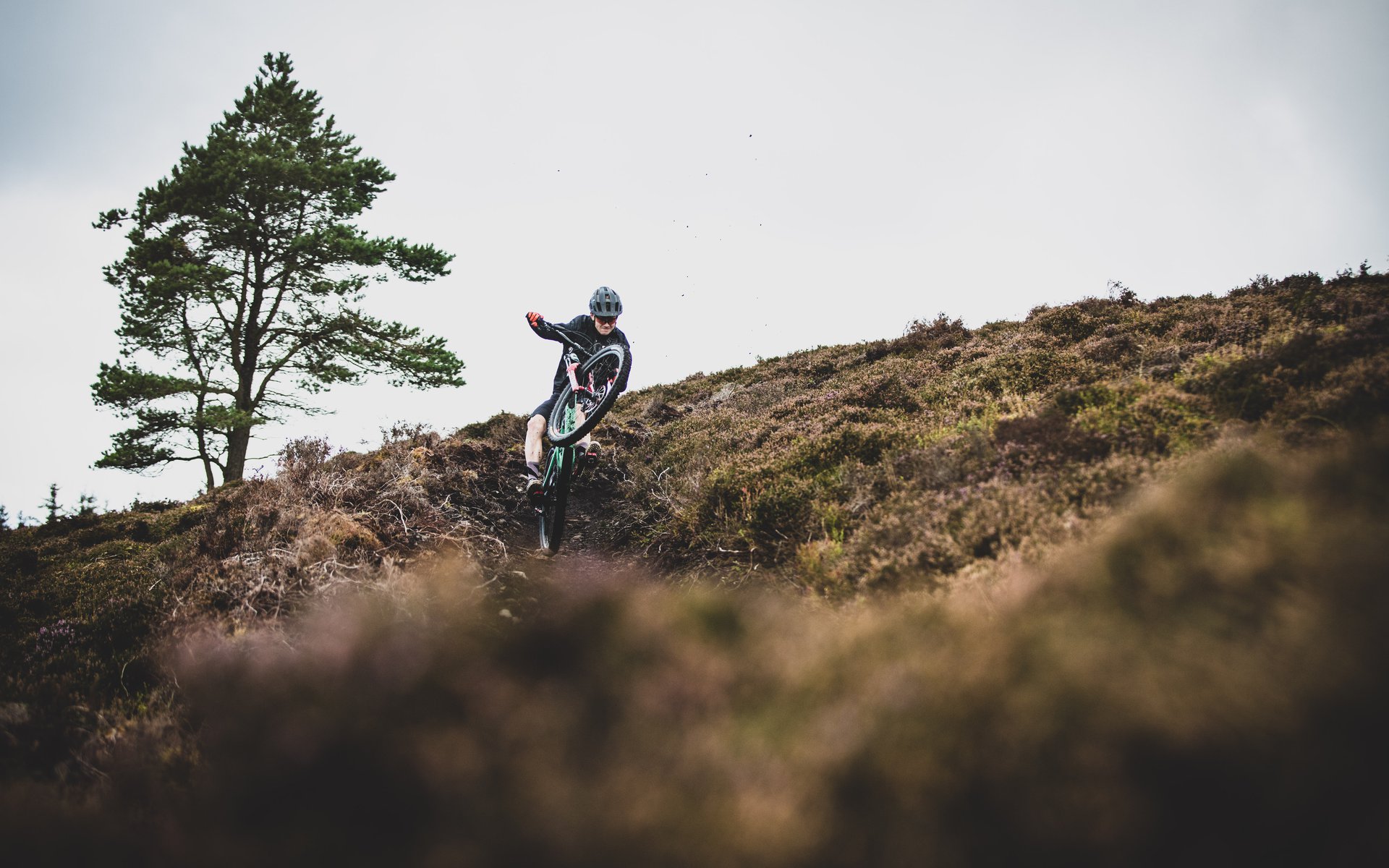
TRIPPIN' IN THE TWEED VALLEY - PART II
Scotland is for Mountain Bikers
Something big is happening with MTB in Scotland. Last September, I traveled to the Tweed Valley as a guest of Santa Cruz, to ride the trails, meet some of the people behind it all, and experience the beauty and magic of the area. This is part two of that story. Read part one first if you haven't already - you can find it here.
A Brief and Incomplete History of MTB in Scotland
Despite what I wrote about the contentious nature of the trails in Scotland, mountain biking has actually always been well received there. As is the case in BC, many towns throughout the UK have seen mountain biking-related tourism and industry replace some of their reliance on natural resource-based economies, but Innerleithen is one of the most impressive success stories.
I spent some time on the phone with Ed Shoote, Senior Project Manager - MTB Project Innerleithen for DMBinS (Developing Mountain Biking in Scotland) as well as his boss, Graeme McLean, who is the National Manager for DMBinS. Together, they were able to fill me in a little bit on the past, present, and future of MTB in Scotland.
The fact is that Scotland has a healthy cycling culture, and combined with the Scottish love for the outdoors and stoic attitude towards their shitty weather, mountain biking was embraced quite readily as it made inroads in the country, with the first purpose-built trails appearing in the 80s. There was always some conflict with landowners, including the Ministry of Land and Forestry, however the existence of Right to Roam - though it was unofficial until 2003 - meant that though it was sometimes unsteady, there was always a degree of acceptance of riders and their trails (to varying degrees). An EU-sponsored pilot project in 1997 saw a trail built in Glentress that was designed to show the difference between a rogue-built trail and a state-sponsored one. This was an early piece of progress, but even more would be found from the aftermath of the foot-in-mouth disease outbreak of 2001*. Following that disaster, the government put out the call for innovative ideas with the goal of stimulating the economy; the 7stanes trail center network was the result, and it marked the beginning of an organized and concerted effort by the government to develop and support MTB across Scotland.
*If COVID-19 restrictions have got you down, foot in mouth was potentially worse as it caused rural areas to be shut down to recreation.
By 2006/7, that relationship had soured a bit as riders felt the Ministry wasn't consulting them on certain decisions and, for their part, MTB groups were asking for trails to be built in areas that weren't sustainable or feasible for one reason or another. By 07, the Forestry Ministry asked to see a plan for national development. This was the catalyst that Scottish Cycling needed, and it was at this point that Graeme McLean became involved in the process (so he's been at it over 13 years now). The result was over 5 million pounds in funding that was committed to trail facilities over the next 4-5 years. Now cafés and hub sites were springing up around trail centers, further legitimizing their user-friendliness and, crucially, economic impact on communities.
Fast forward to 2014/15, and the Scottish Borders Council identified the Tweed Valley as a key area for development. This was the impetus that was needed to create a collaborative effort between the Borders Council, Forestry, Scottish Cycling, and the local authorities and business community. The national government provided funding, which was matched by the EU, and was thought to be very successful. It took until the last couple of years for this initiative to really start coming together, but now the pace of development is quickening and gaining momentum.
Having worked in trail development roles both in Scotland as well as in Canada (in Kicking Horse resort in Golden as well as in Fernie, BC) and with a background in accounting, Ed is well suited to the task of heading up MTB development in Innerleithen as well as the liaison and vision the role requires. His experience with several types of trail networks, including bike parks, should be useful as the area develops the trails it already has and looks to do more in the future. He's been in his full-time role since 2017, with a focus on Innerleithen since January of 2020, so a lot of this progress is only beginning, however there are a lots of positive signs for the area:
- the EWS (Enduro World Series) moved its Global HQ to Glentress,
- Dirt School and Tweed Valley Guides added to their operation by opening their own bike shop,
- Hotels, Air BnB locations, and restaurants are opening at a steady pace in the area,
- there are plans to develop an old textile Mill into an Innovation Center devoted to promoting development within the MTB industry (more on that below),
- There is a strong possibility of adding an uplift/updated bike park in the region, although nothing is quite confirmed yet.
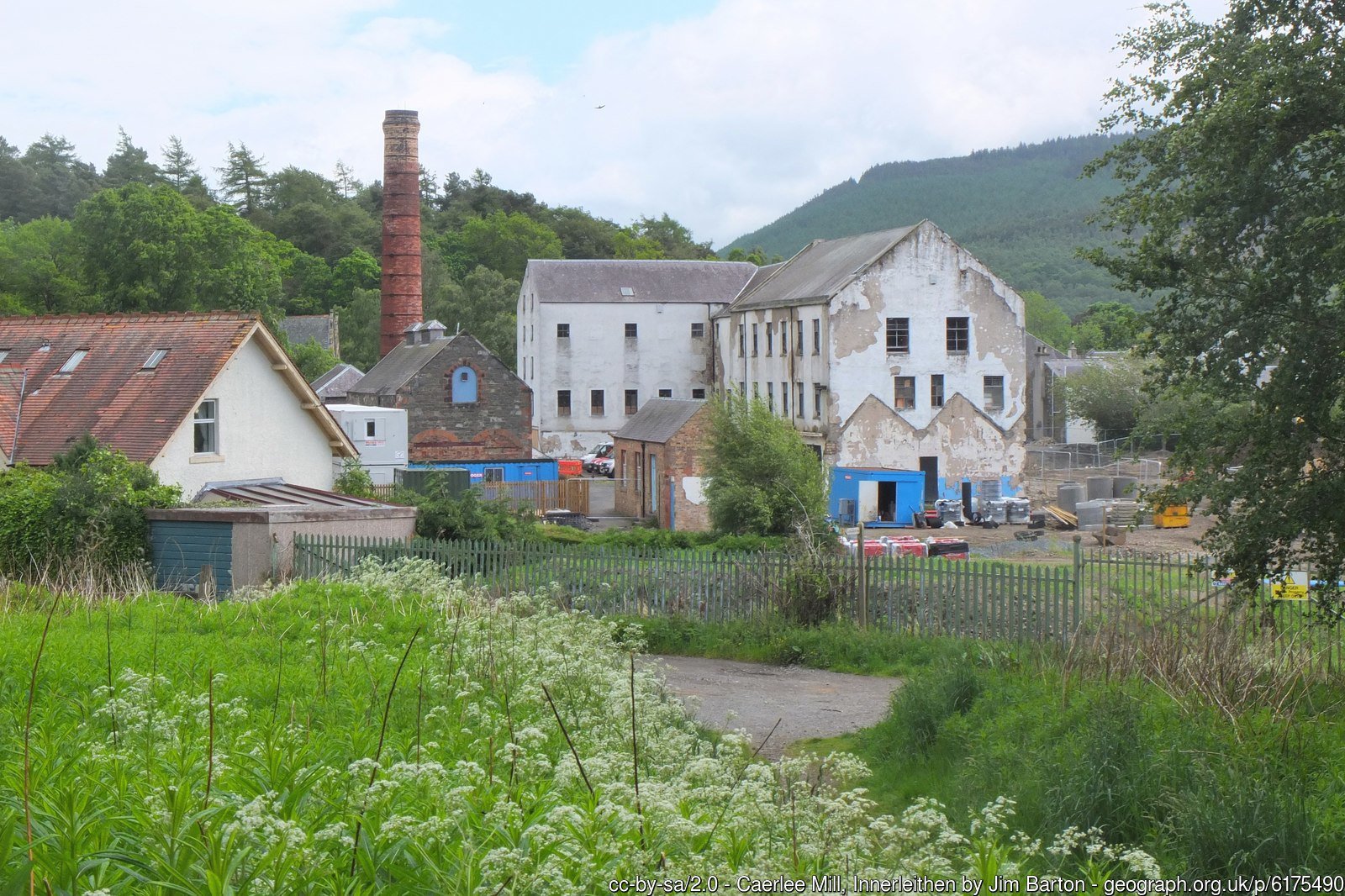
The Caerlee Mill in Innerleithen is the proposed site for a new Innovation Center that would give mountain bike companies a place to develop and test ideas and new technologies, while creating high value jobs for residents in the Tweed Valley and opportunities for students from nearby schools like Edinburgh Napier University.
The Mill
If it was the decline of the textile industry in Innerleithen that led to a depressed economy and bleak future in the 90s and early 00s, it is fitting that the old Caerlee Mill building could become one of best symbols of revitalization that mountain biking has brought to the region. Lift-accessed mountain biking would make the Tweed Valley more of an internationally recognized riding spot, but The Mill would put it on the map with an even wider audience. Intended to be an innovation center that provides opportunities for business growth, The Mill would pay dividends for stakeholders in the Tweed Valley as well as for our sport as a whole, in addition to being a hell of a way to bring new interest in the area. The basic idea is that it would offer a place for new companies or existing ones to have a place to incubate and test new ideas, in close proximity to a world-class riding area. For upstart brands, it would provide some of the energy and proximity to other companies and innovators, like a co-work space does for contractors or remote workers. For established brands, an opportunity to shake things up and send an R&D unit to a fresh location. Inspired by road-bike related corporate clusters like Bike Valley Flanders and Bike Valley Portugal, The Mill idea aims to create an anchor for innovation as well as facilitating it, first for UK-based companies and, later, for those from other countries.
Whether you're working on a new suspension platform or developing outerwear and need to be close to great riding with plenty of shitty weather, The Mill will provide access to lab and office spaces, links to Edinburgh Napier University and its students (interns, fresh thinking), and allow some parts of the innovation process to be faster and - crucially for startups and small businesses - less costly, since they won't have to commit to long-term leases and other capital investment in order to conduct R&D.
A secondary goal of the Mill is to emphasize ties to the local riding community. The influx of workers make some parts of that obvious, however there will also be a trailbuilding school attached to the Mill, called the DIRTT Project (Developing Inter-European Resources for Trailbuilding Training).
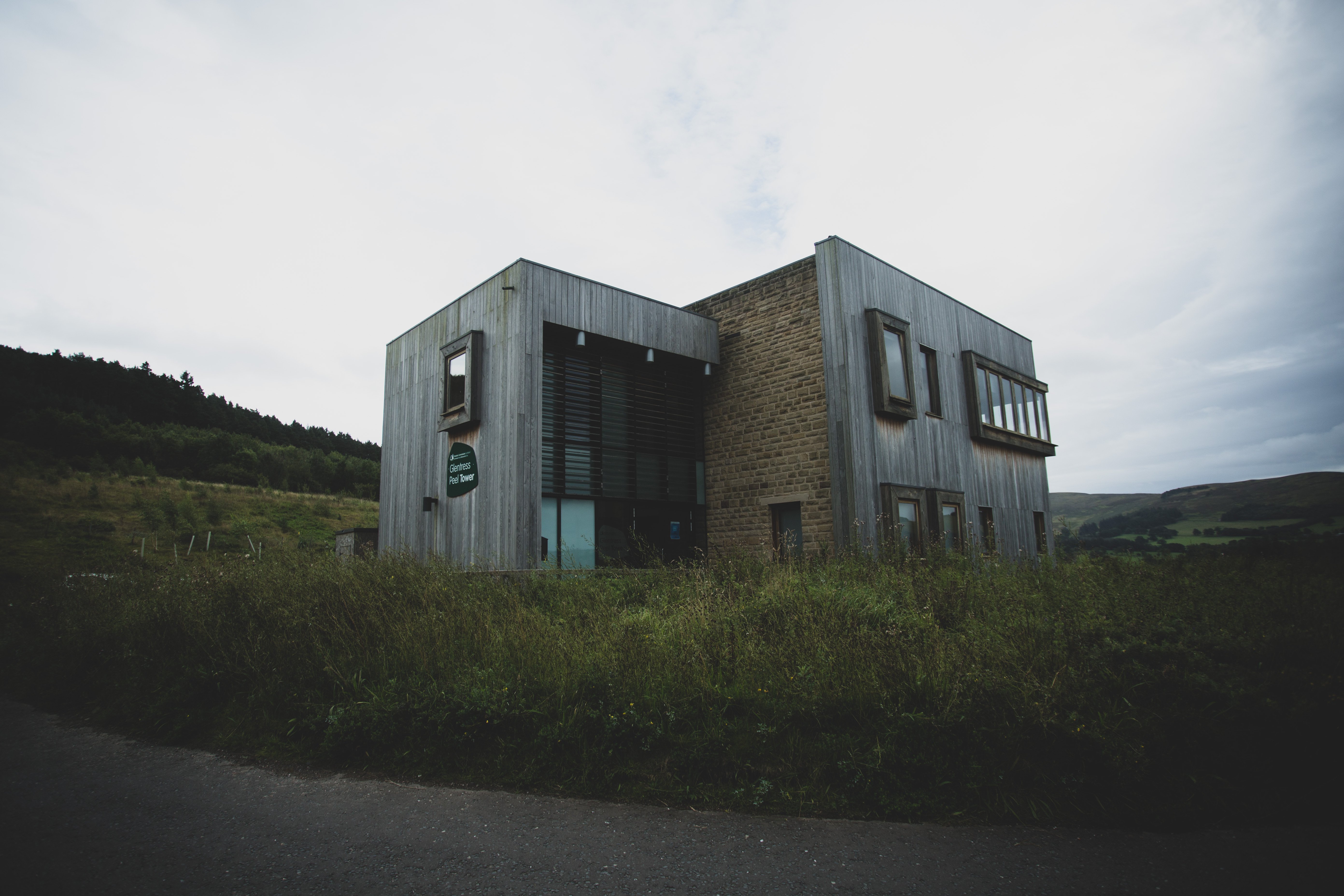
Just above the Glentress trail center is the admin building for The Mountain Bike Centre of Scotland, which is somewhat of a precursor to what the Mill will be once it opens.
It's going to take money to get this project off the ground, which is why the Borderlands growth deal - announced in July of 2019 by several cross-borders councils as well as the Scottish and UK governments - is so significant. It calls for as an investment of up to £350m from the two national governments and up to £45m from the borders councils to stimulate economic growth and jobs in the area (the Borderlands refers to Northern England and Southern Scotland). Specific mention is made in the plans to earmark £19 million for this development: £6 million of the 7stanes trail network (bike park) and £13 million for a mountain bike innovation center (The Mill project).
The aim is for The Mill to be open in time for Scotland to host ALL disciplines of the 2023 Road and MTB World Championship. If you're wondering if you read that correctly, you did: that would include Track, Road, BMX, and MTB - every two-wheeled event that has a UCI-sanctioned World Championship event except Cyclo-Cross - and this would be a world first and a huge coup for Scotland to have landed it. The world will be coming to Scotland, and The Mill is just one exciting ingredient of the bike pudding that Scotland is preparing to serve up.
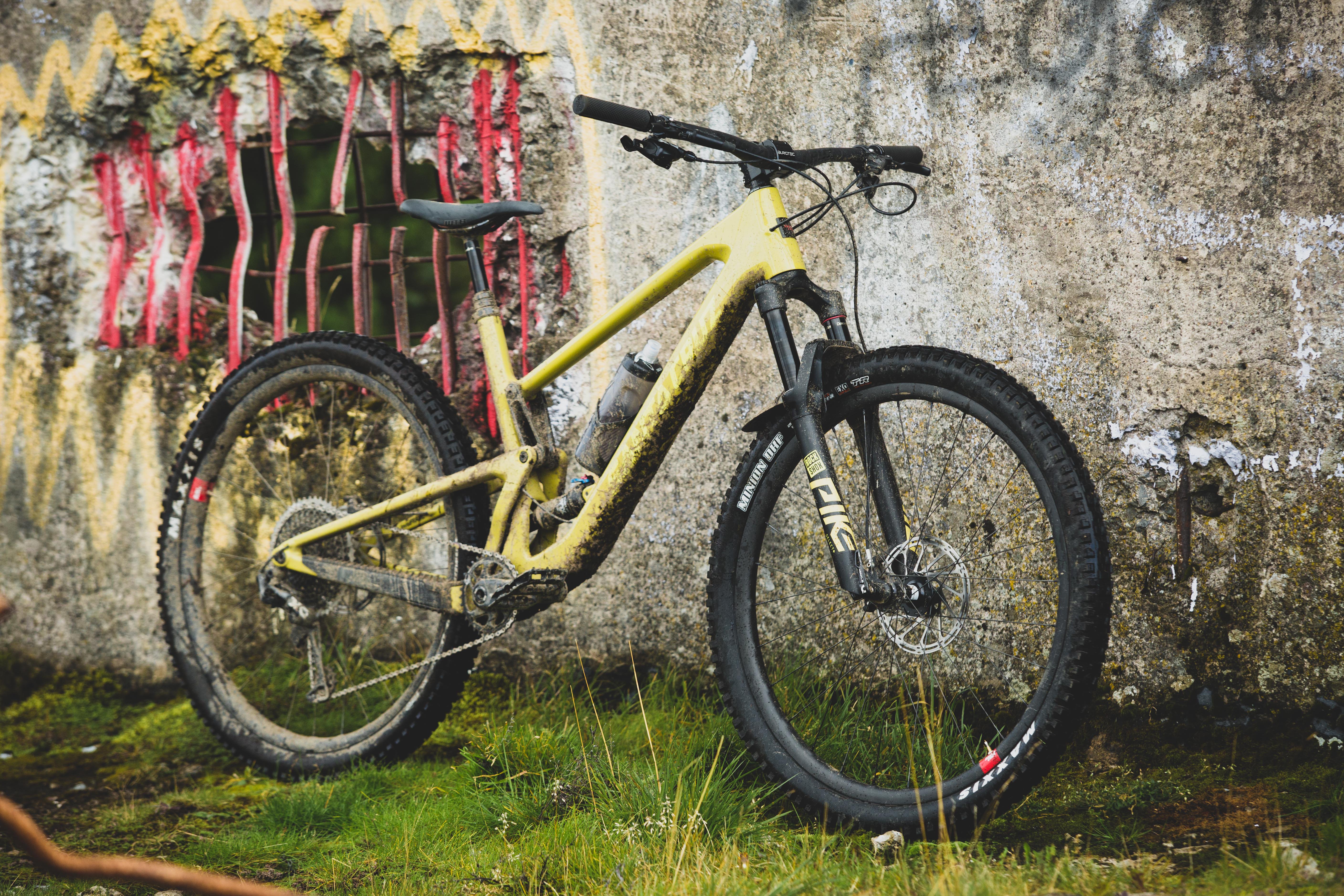
The Santa Cruz Tallboy I took to Scotland was perfect for long, jet-lagged days in the saddle across all kinds of terrain.
The Santa Cruz Tallboy
This trip to check out what's happening in the Tweed Valley was made possible by Santa Cruz, who are heavy supporters of many of the movers and shakers in the area: they are sponsors of the EWS, Dirt School and Tweed Valley Guides, EWS racer Mark Scott, Go-Where Scotland (a guiding company owned & operated by Andy and Aneela McKenna), and Stoked On MS, which is Andy McKenna's way of raising awareness and battling MS without the use of drugs. They have supported trail building efforts in the area and countless other small contributions. This is not unusual for Santa Cruz; they have always been big supporters of MTB communities from the grassroots level on up, and doing what they can to help keep them robust and healthy. So, naturally, I spent the three days riding in Scotland on the Santa Cruz Tallboy we'd been testing. It seemed like everyone else was on a Megatower (Janey was on a Roubion but planning a switch to a Strega), and no doubt a little more firepower would have been preferable, however after a few shakedown rides to get used to it on the Shore before packing it up to take to Scotland, I was pleasantly surprised by how capable the Tallboy proved to be. It was only a mild surprise because I knew how much Cam liked the Tallboy, as well as lots of others, but had yet to find out for myself.
In fact, given the kind of riding you can do in the Tweed Valley, or when traveling to ride in general, meaning a lot of exploring, extra kms when linking different trail networks, or just using the bike to see the countryside at a slower pace rather than a car, I'd have to say it's a perfect example of versatility combined with flat out fun. It's a Tallboy, so it pedals incredibly well, whether grinding up technical climbing trails or double track, but we also had several 5-8km transfers between riding areas, and while I don't mind pedals like that on longer-legged bikes, on the Tallboy it felt so much more efficient and easy that I found myself thinking about linking up longer rides in the area. That always happens to me when riding on quicker mountain bikes, but the bonus with the Tallboy is that it is such a capable trail bike that there aren't many trails or riding areas where it wouldn't be a perfect tool for exploring. The only changes I was wishing for in the roots, mud, and ruts of some of the trails we rode were better brakes (I'm not fond of the lack of power that SRAM G2s are plagued with even for trail riding), and a bit of a stouter front tire than the 2.3 DHRII in EXO that came on the front of the TB. Otherwise, the geo, stout frame, and riding manners were bang on for the 'little bit of everything' riding we did over three days in the Tweed Valley.
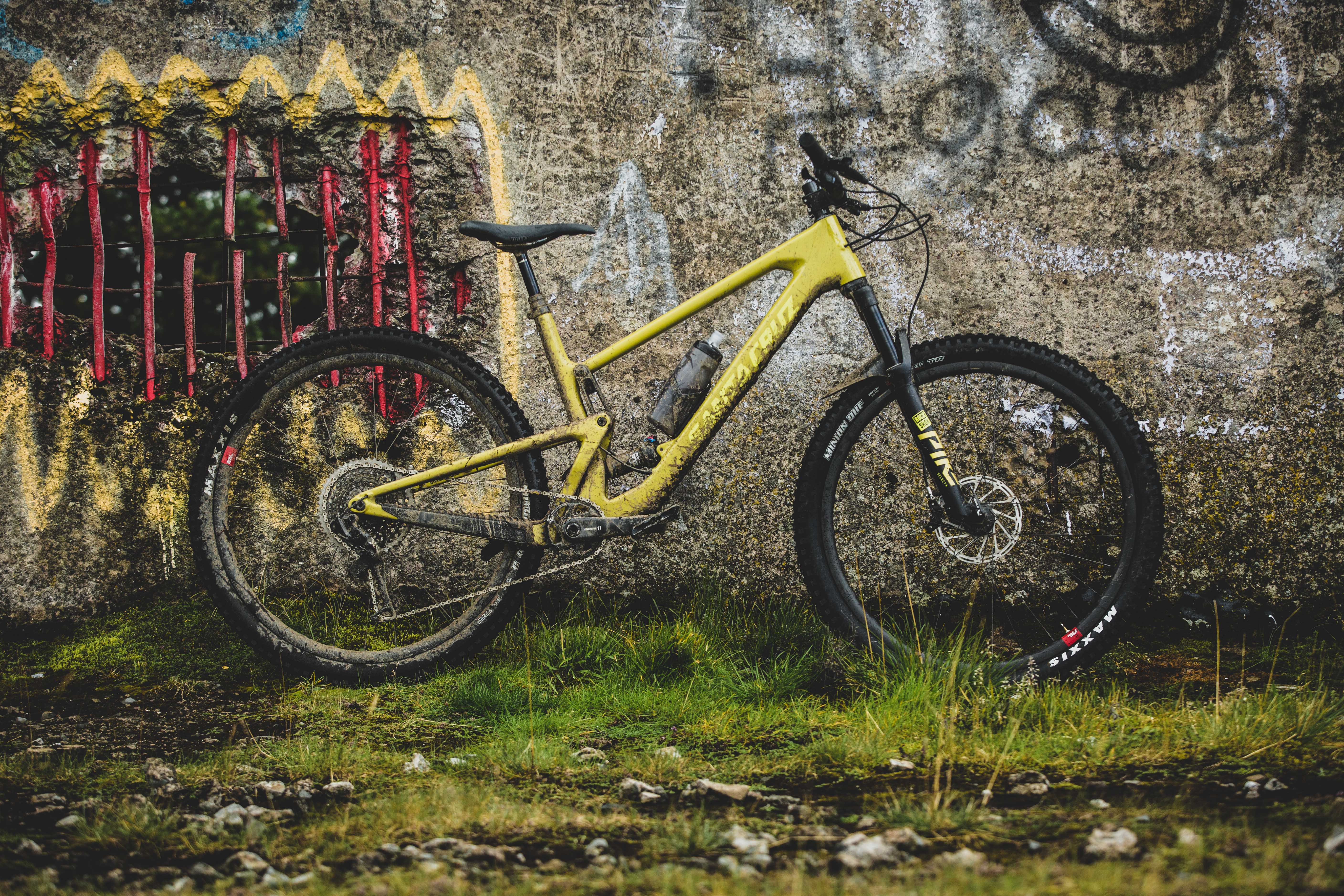
There's not a lot I'd do to change up the Tallboy to suit my uses, but if I had one to tinker with, I'd: add 10mm travel up front (preferably on a slightly stouter chassis than the Pike - but that's my 190lbs talking), a beefier front tire (2.5 Assegai EXO+, please) and a stronger brake than the SRAM G2 I was running - Codes with a 200mm front rotor would be perfect.
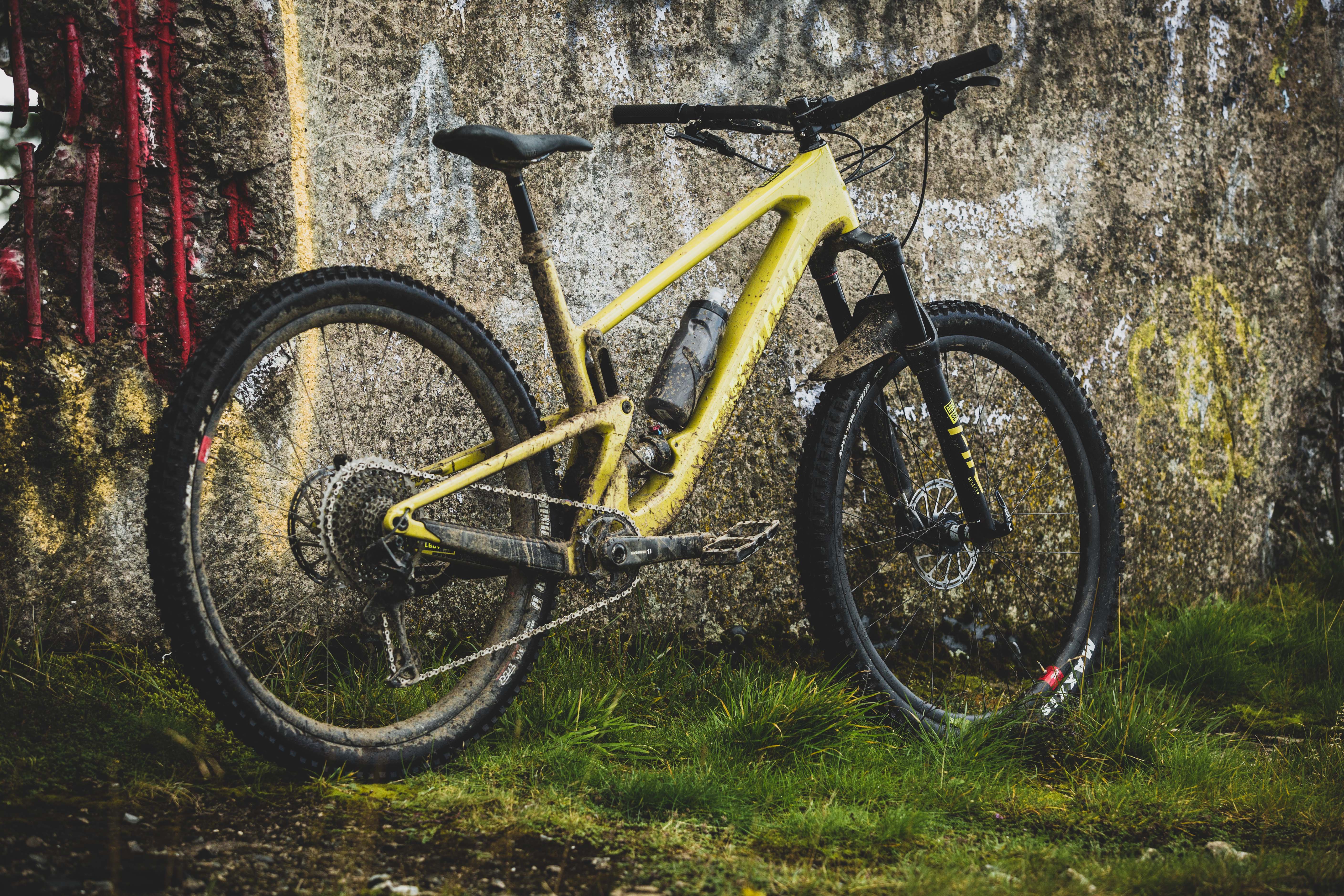
All else was ideal, including the colour, which contrasted nicely with the Scottish countryside, or in this case, an old quarry building.
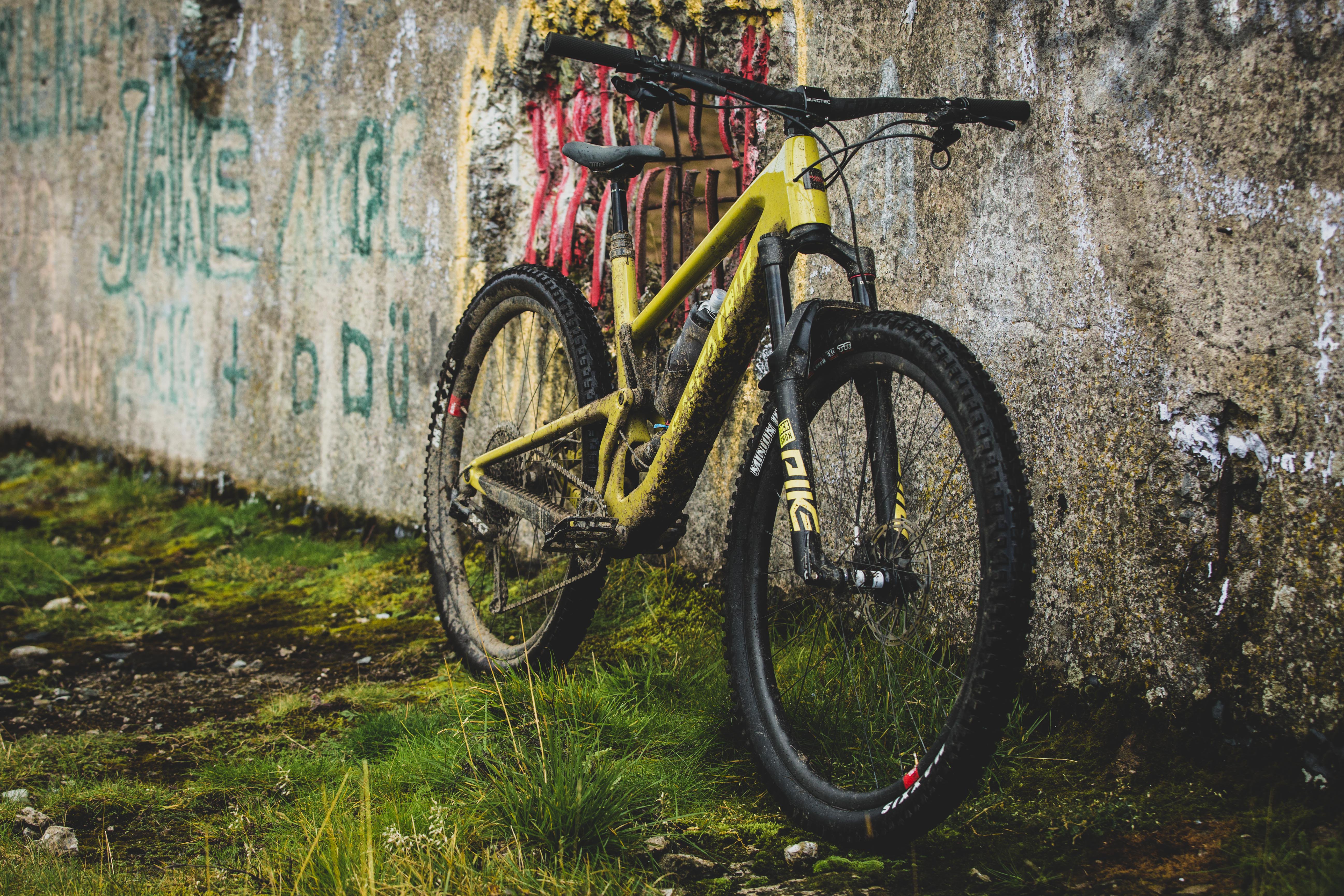
Worth noting, though, that I never felt like I was on a 'small bike'. The geo and overall capability make the Tallboy feel like a 140mm travel trail bike. There were a few times where that meant I was testing its limits, but that was a refreshing change from riding a 170mm bike that has limits I don't think I'd want to find. There's something empowering about figuring out the edge of something and then backing off 5-10%.
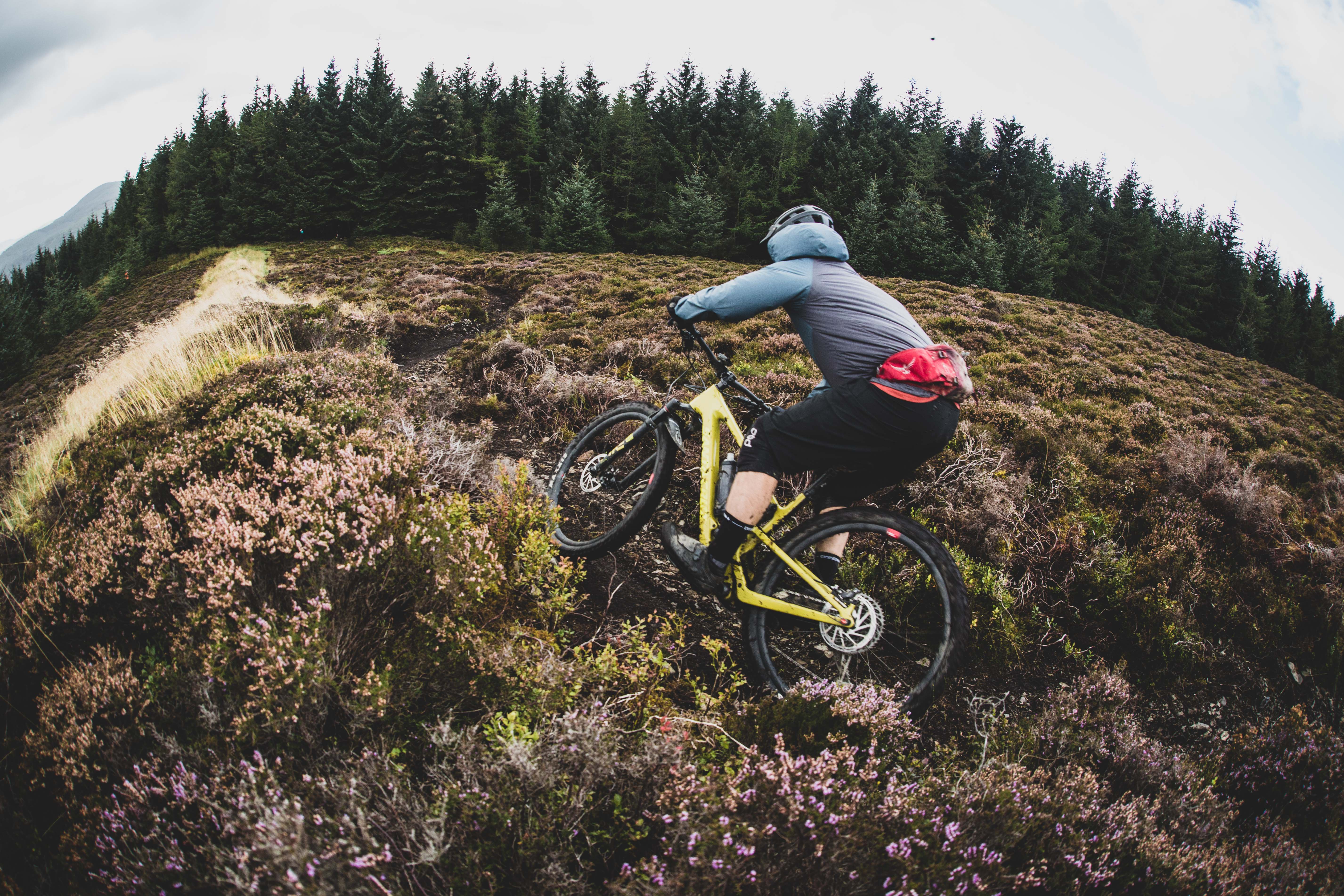
Those are nitpicks, though. Whether pointing it down or up, the Tallboy was a fantastic trail bike, on the Shore as well as in the Tweed Valley.
Riding in the Tweed Valley
The rolling hills of Scotland's Tweed Valley make for very good riding, and there are several great trail networks that have different flavours, depending on what you're looking for. Glentress is the high profile area, having had lots of government investment and support as part of the 7stanes network, complete with a café serving great food and coffee, a terrific bike shop called Alpine Bikes Glentress with a huge rental fleet, plus the facility has bike washes and showers. It feels every bit like the base lodge at a ski hill, only for riders. There is a vertical rise of over 400m to work with, and trails vary from beginner and kid-friendly to expert level terrain complete with jumps and bike park-style trails that let riders push for speed and air all over the place. With over 80kms worth of trails to choose from, there are lots and lots of days of great riding stashed within the Glentress network, whether you're a local or a tourist looking for a few days' worth of fun.
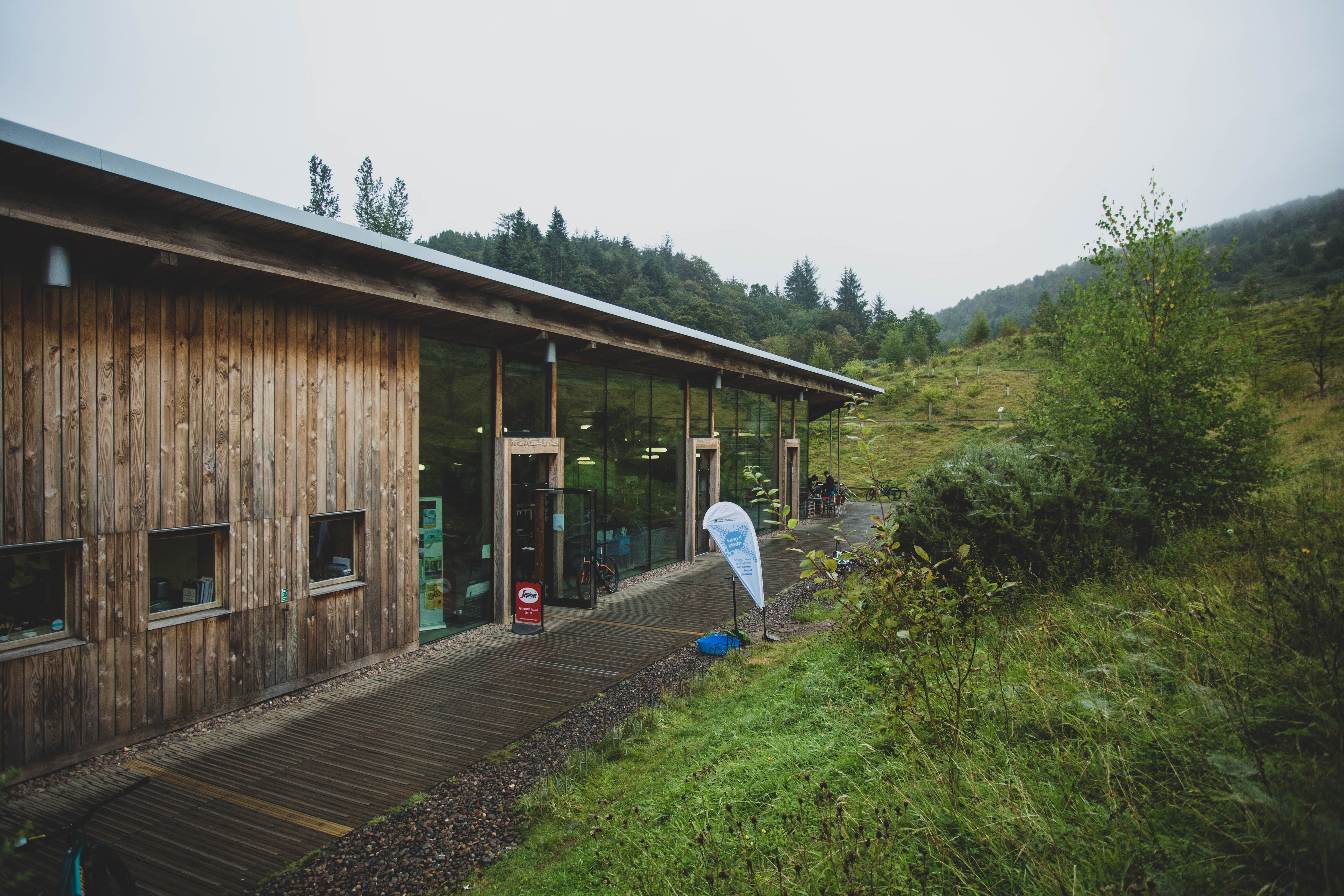
The trail center at Glentress has over 80kms of trails to choose from.
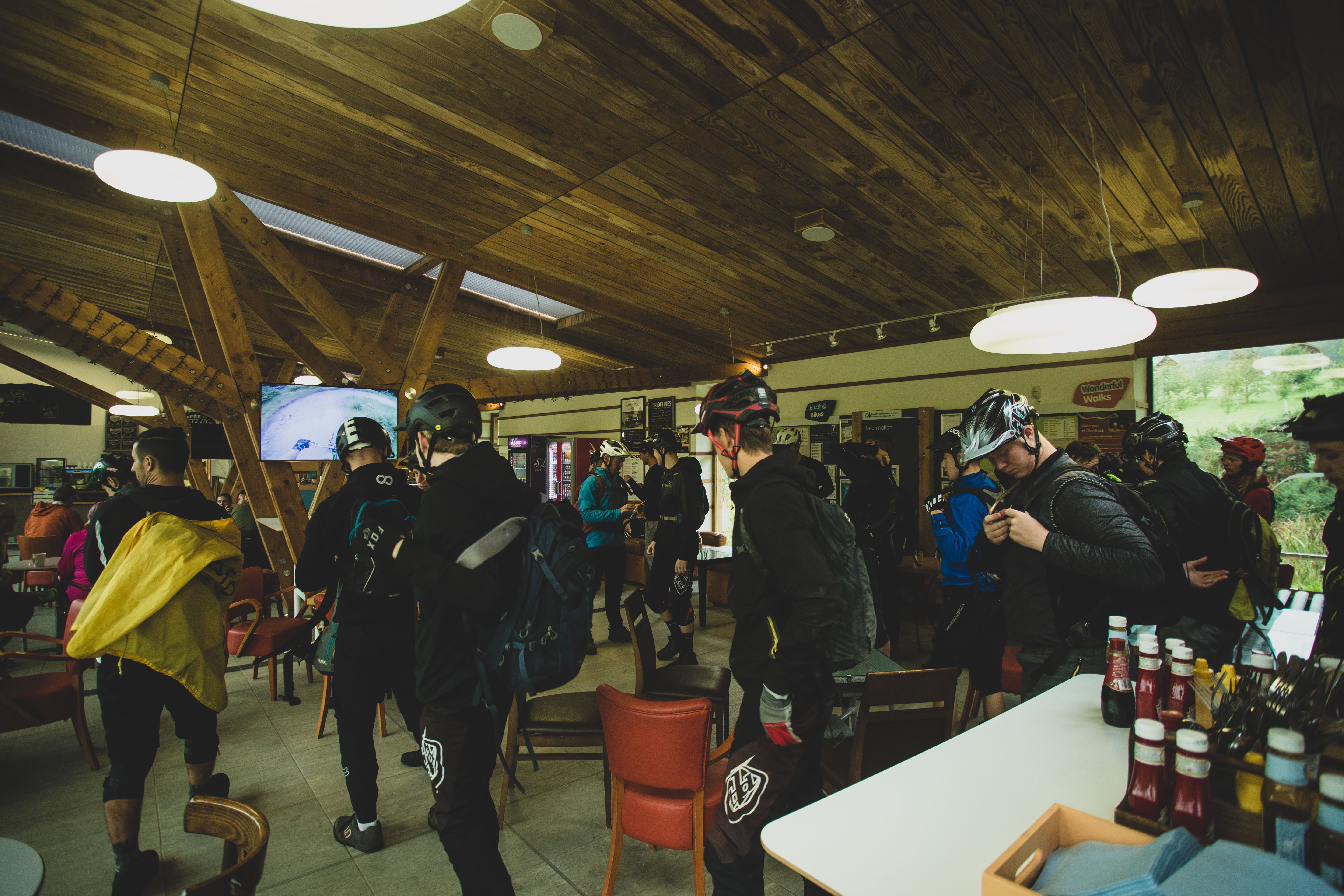
The café serves great coffee and food (if you were under the stereotypical impression Scottish food isn't the greatest, you'll be pleasantly surprised in places like this).
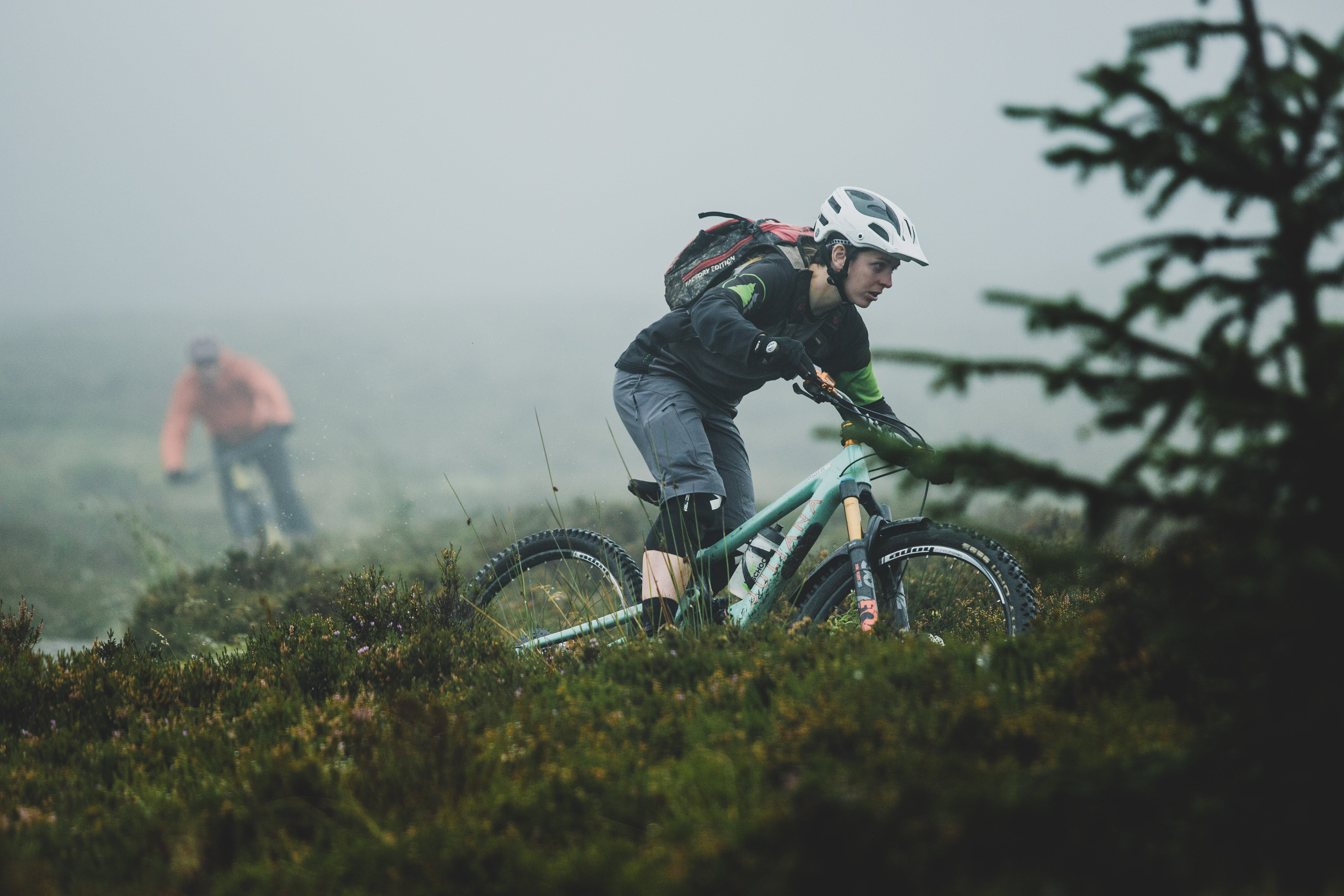
Janey Kennedy leads Danny Milner down one of Glentress' heather-lined trails.
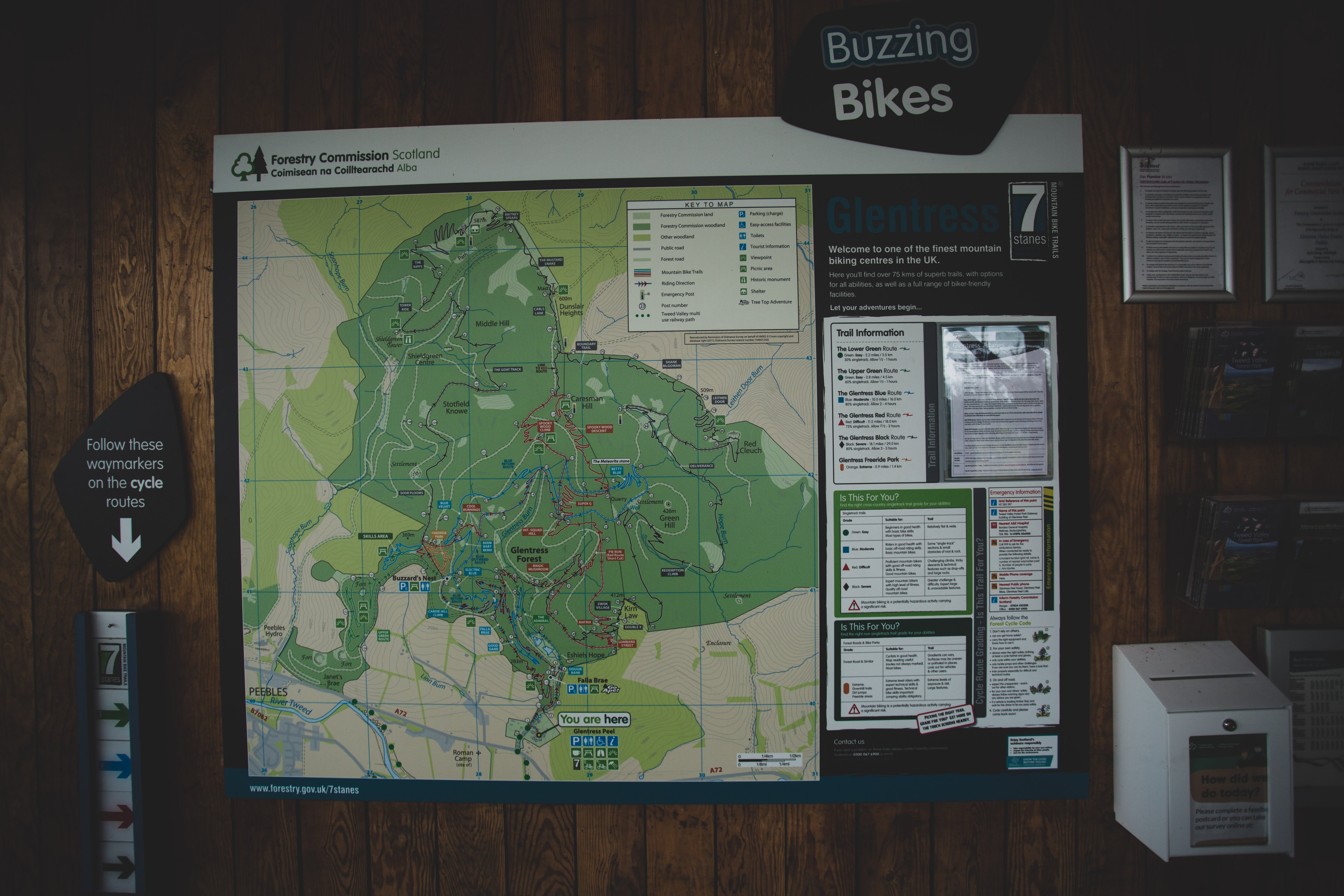
The trail map at Glentress, the pride of the 7stanes network.
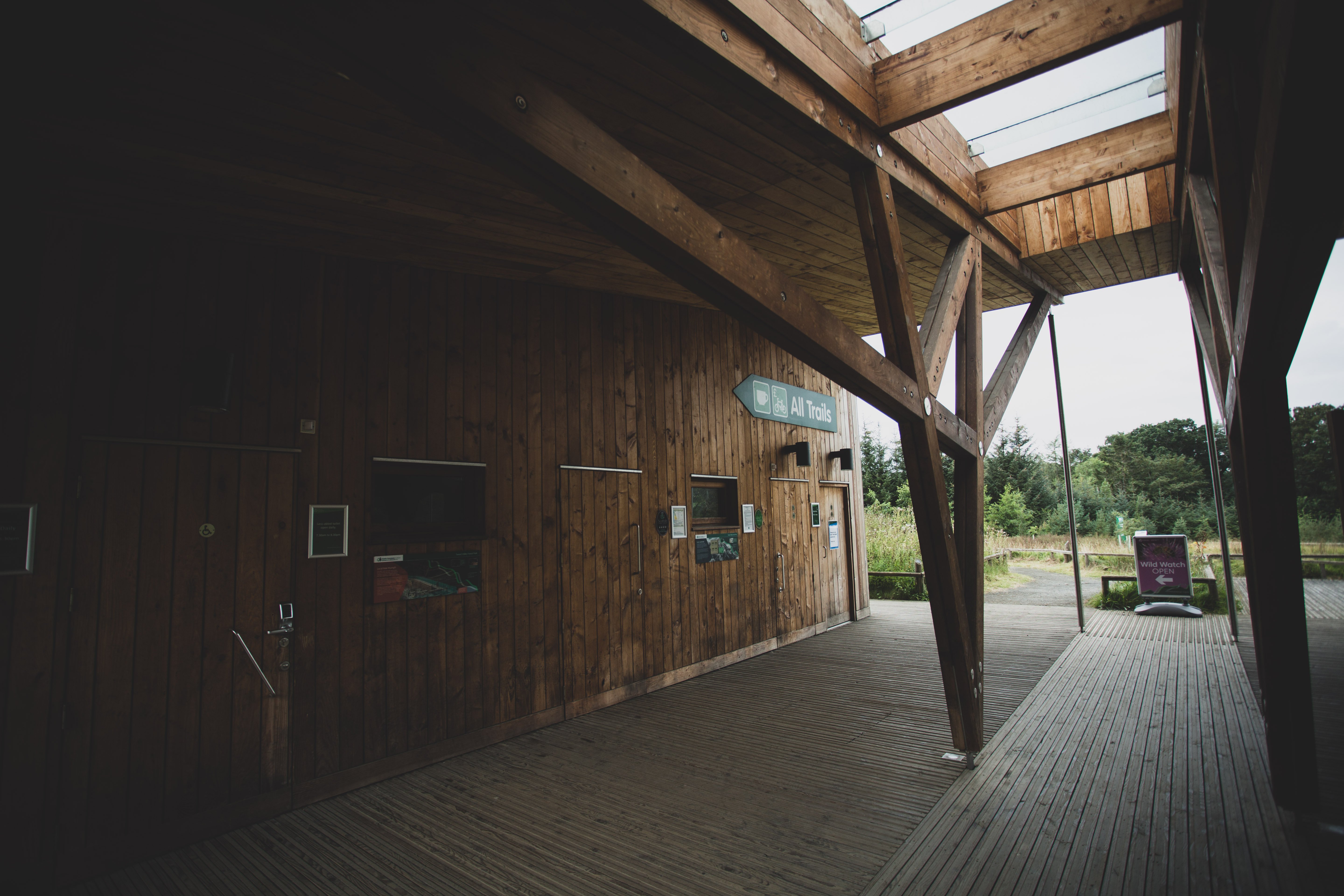
Innerleithen, aka 'Inners' which also includes 'the Golfie' is another very well-known riding area, albeit less developed than Glentress but with a more homegrown, handbuilt feel. Downhill racing (and, more recently, EWS) has been happening here for decades. The trails here skew more advanced and are steeper, and this has also been an area with lots of rogue building over the years. On day three we rode one trail so steep and with such slippery mud that there were sections where staying in control felt like a random event - it was fun as hell but I was wishing for more beef on the front tire and a bigger fork. There is a climbing track here but you can also shuttle up with Adrenalin Uplift who have been operating in the area for years. Climb high enough and you'll bust through the forest canopy into the open air, serving as a nice payoff to the effort you put in to climb the better part of 400 meters. It rained each day of the trip, and within the first 30 seconds of the first descent on day one, we were covered in mud. Not just mud-spattered, but a different colour from head to toe. It all shook off eventually, but it was a reminder that the Scots ride in weather every bit as bad as what we have in Coastal BC and the PNW. They also have forests that can be equally dark and haunting as anything on the Shore, which means root balls that are both awesome and terrifying. Their mud, however, is much slipperier than ours and we're spoiled by loam, cedar, and granite, which all handle the wet better than terrain you'll find anywhere else.
We had an absolute blast riding around and above the Golfie trails, and it's the singletrack we hit there on day one and three that I most think about wanting to return to ride again. From the views and high-speed singletrack up top to the technical, more demanding mid-mountain, and a few lower angle trails with s-turn sections I wanted to hit over and over again, it was an area you could spend countless days in learning new route combinations and mastering different sections of really tricky trails.
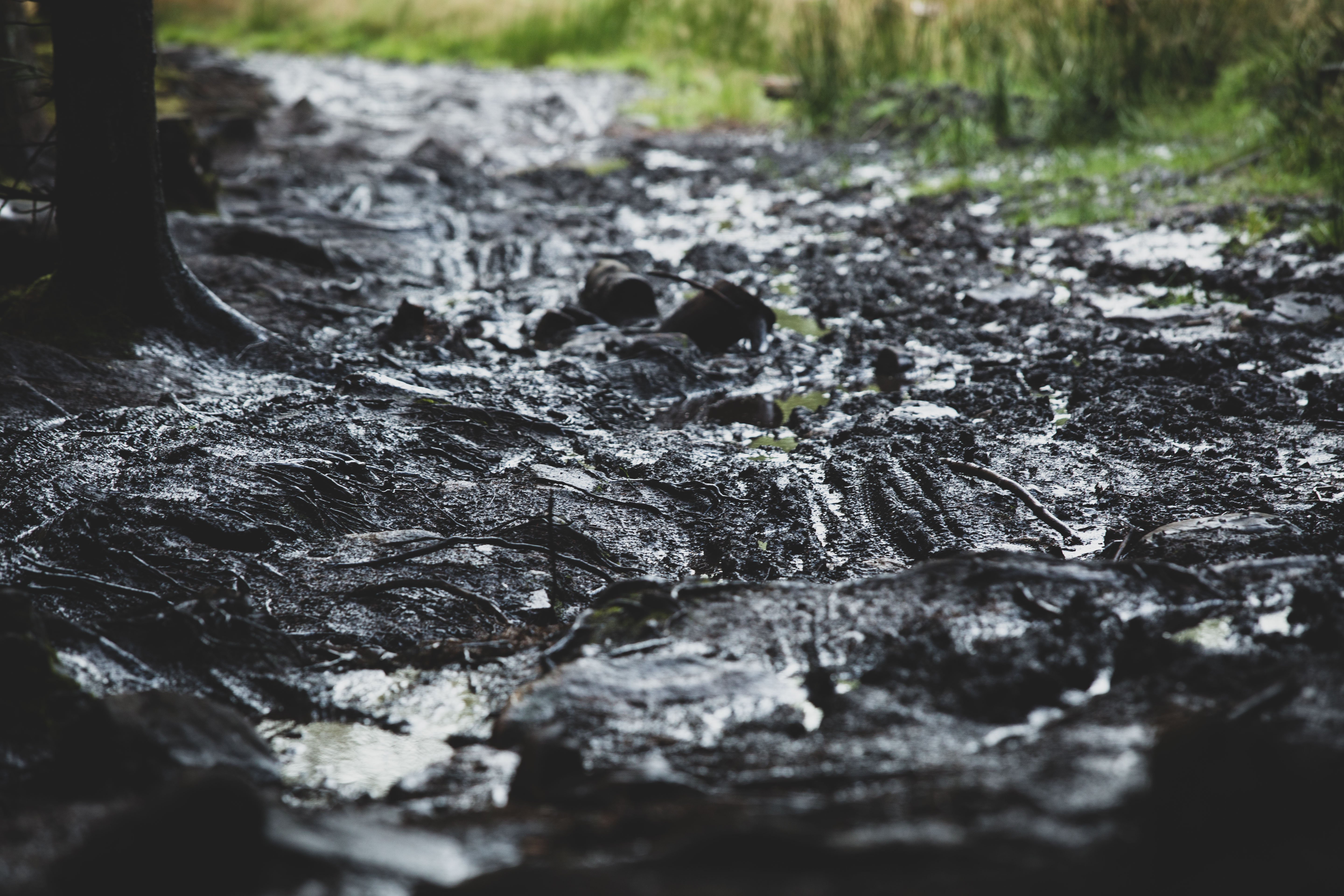
The mud and roots were savage on day one. Also on day two and three.
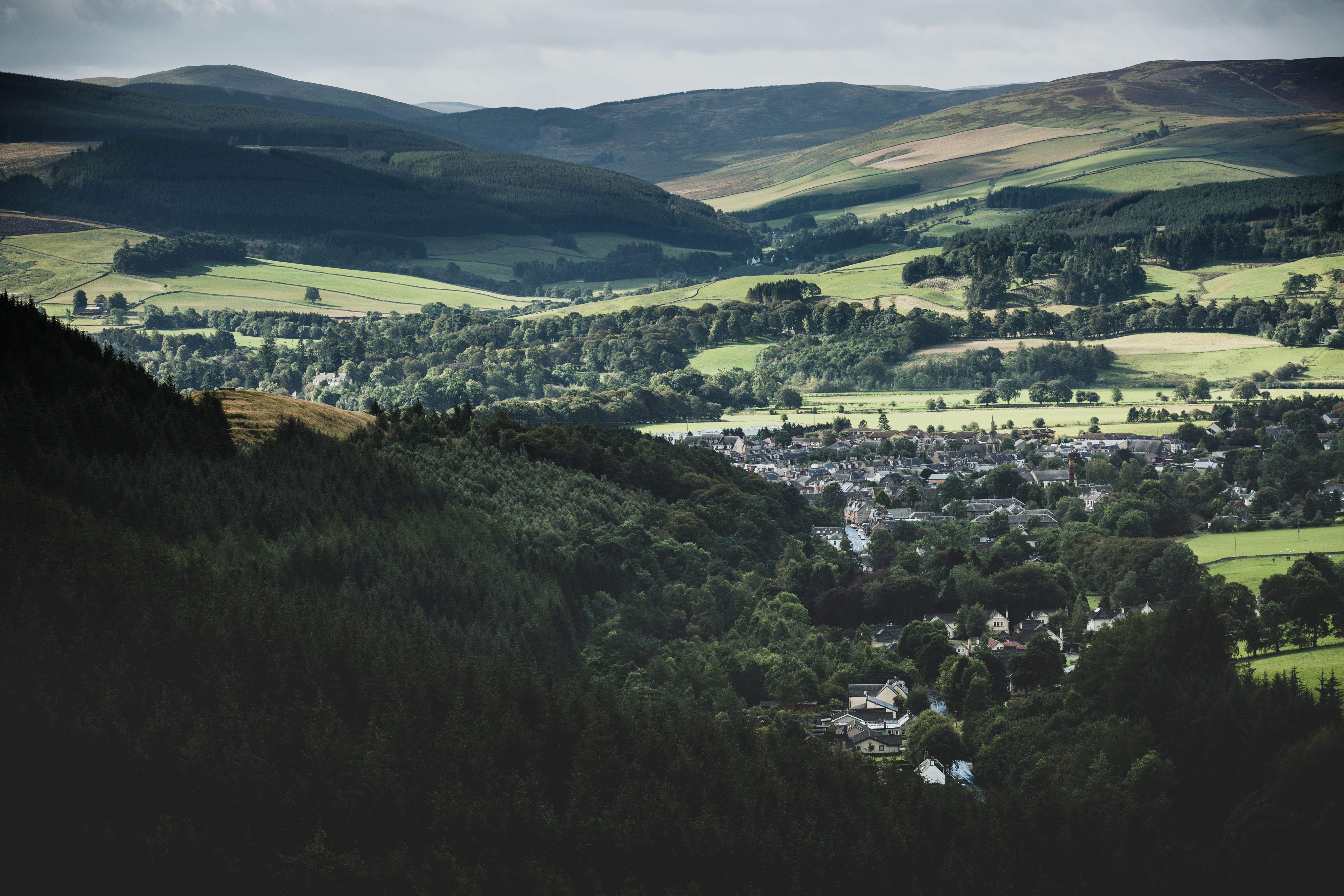
Though we spent a lot of time riding under a forest or cloudy canopy, we busted out occasionally to beautiful views like this one of the Tweed Valley.
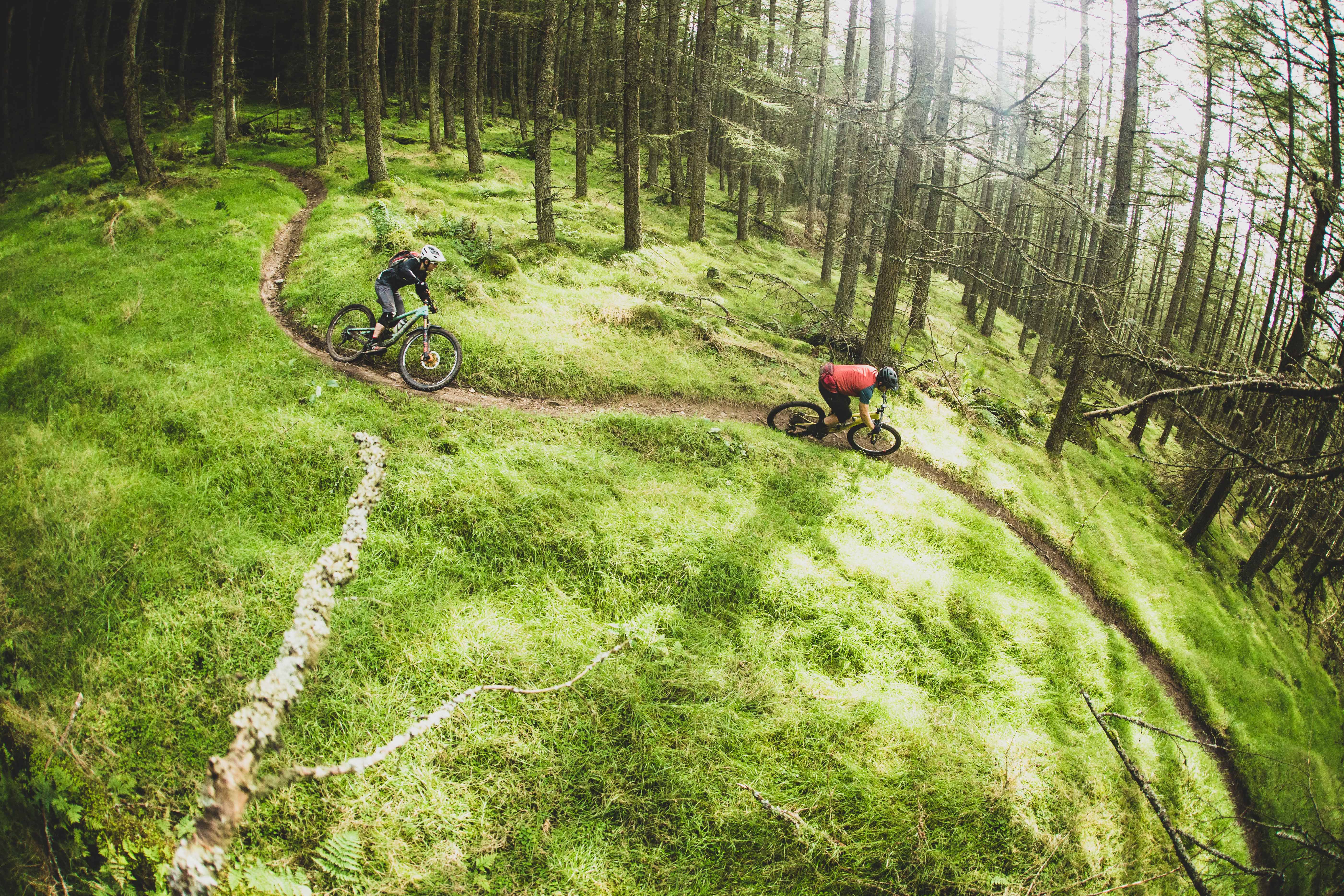
On day 3 we even had a chance to pull our jackets off and feel the breeze on our forearms. This was an eminently sessionable trail full of supportive turns with lots of little pops and pumps.
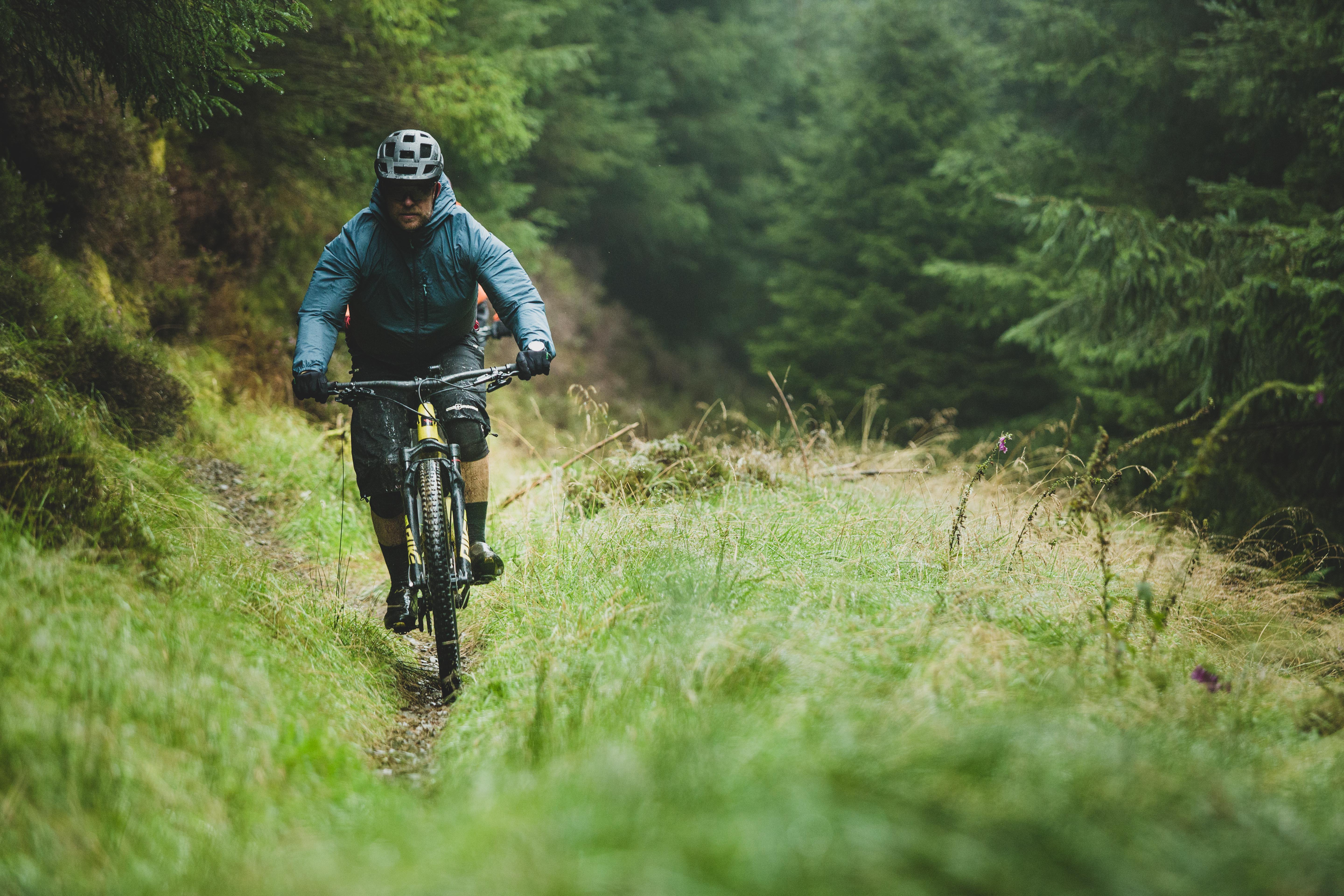
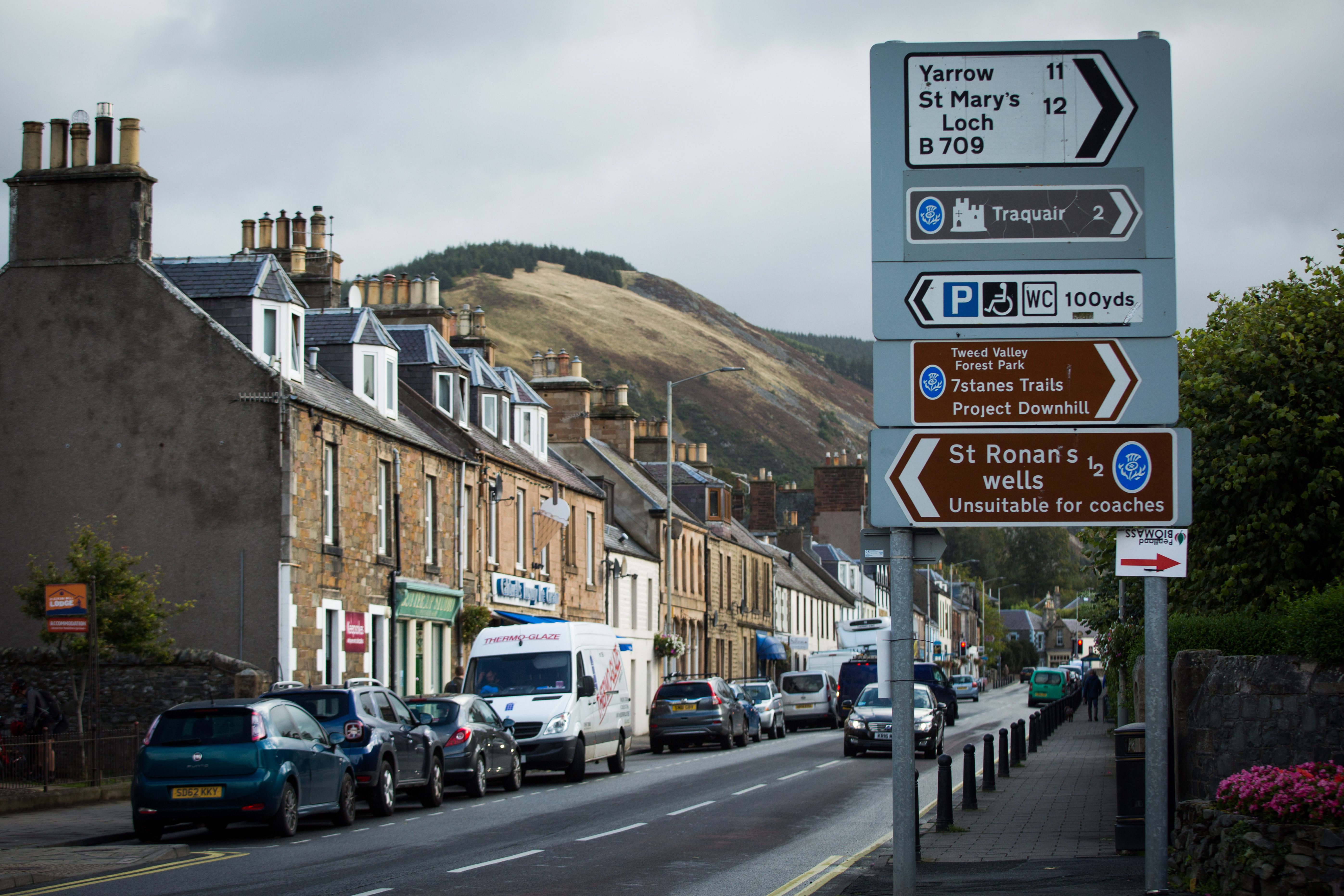
Even the road signs in Peebles make mention of MTB trails.
On the second day of my time in Scotland, I was able to watch Dirt School owner Andy Barlow and one of the instructors, Janey Kennedy, working with their students from the BASE program. On the surface, it didn't feel much different than a ski academy or other high performance sports environment: one rider after another would whiz past, displaying excellent technique honed from top instruction and many hours a week of practice. As the minutes ticked by, they would nudge me to give a little footnote on one student or another. "That one wasn't comfortable on the doubles last year," Janey would say, as the student effortlessly floated over a 15-foot gap while tossing a breezy whip. Or, from Andy: "that student there has fought with their confidence, but in year two has grown into a bit of a leader with some of the first year students". The level of riding was incredible - multiple students took turns pumping aggressively into a huge booter, and then were practicing a rear-wheel landing and carrying the manual into the next jump. I've witnessed plenty of pro-level talent from groups of 18-year old athletes in other sports, but for some reason it was surprising to see it on a mountain bike trail. Probably because it was the first time I'd seen it. For the couple dozen students riders, it was just another Tuesday.
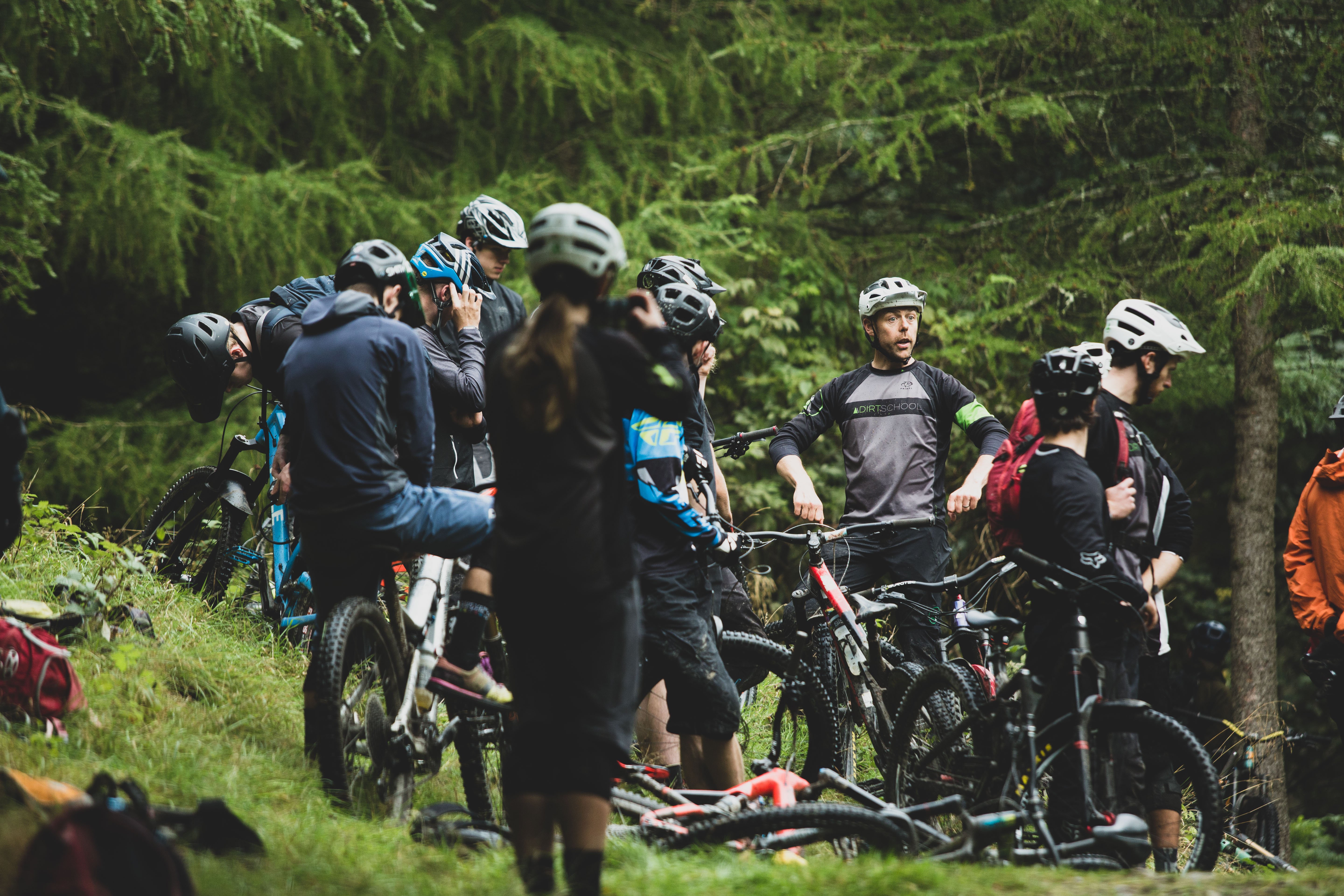
Andy Barlow imparting some wisdom upon the students from the BASE College Course (Borders Academy of Sporting Excellence).
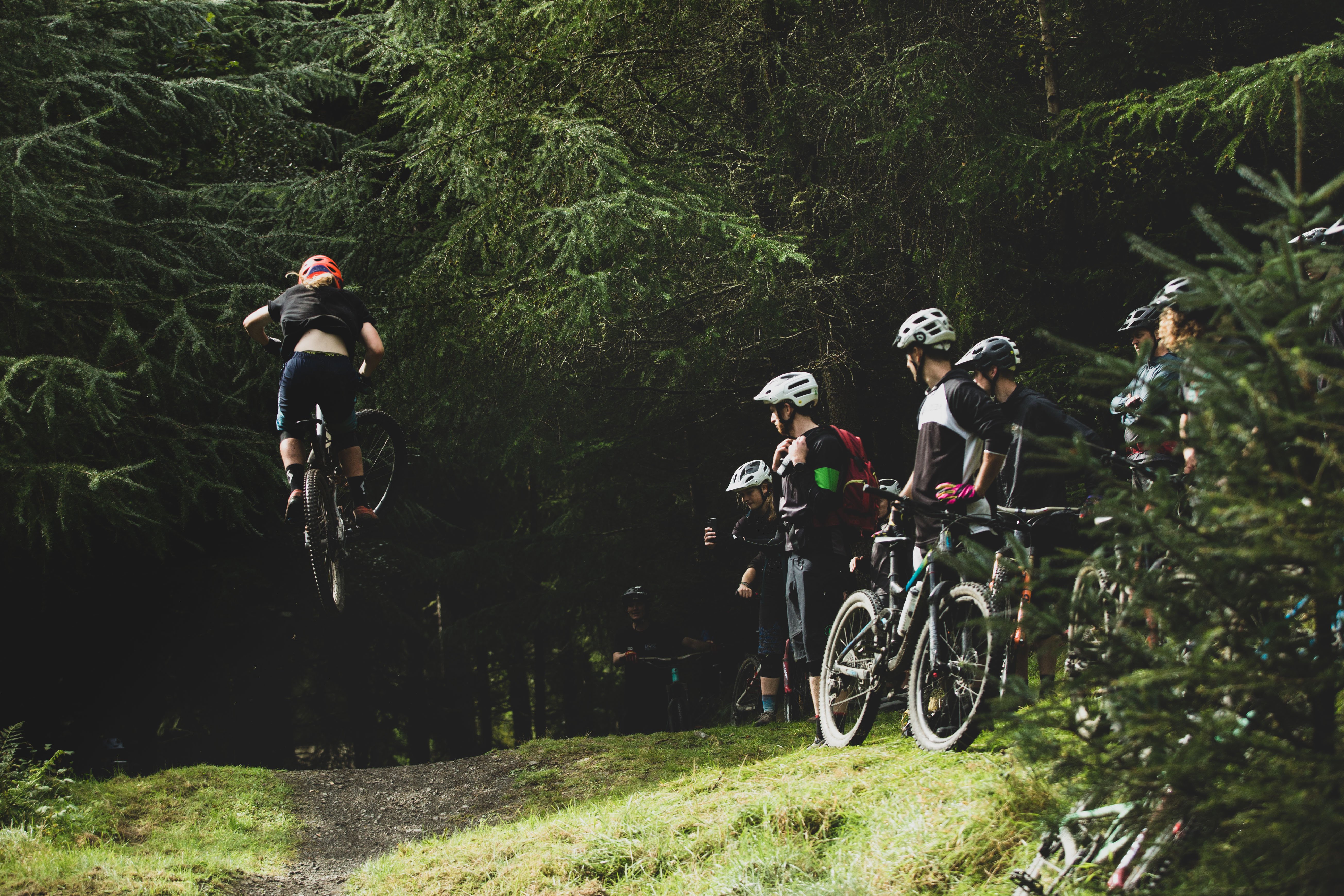
Soaring through the air for University credit.
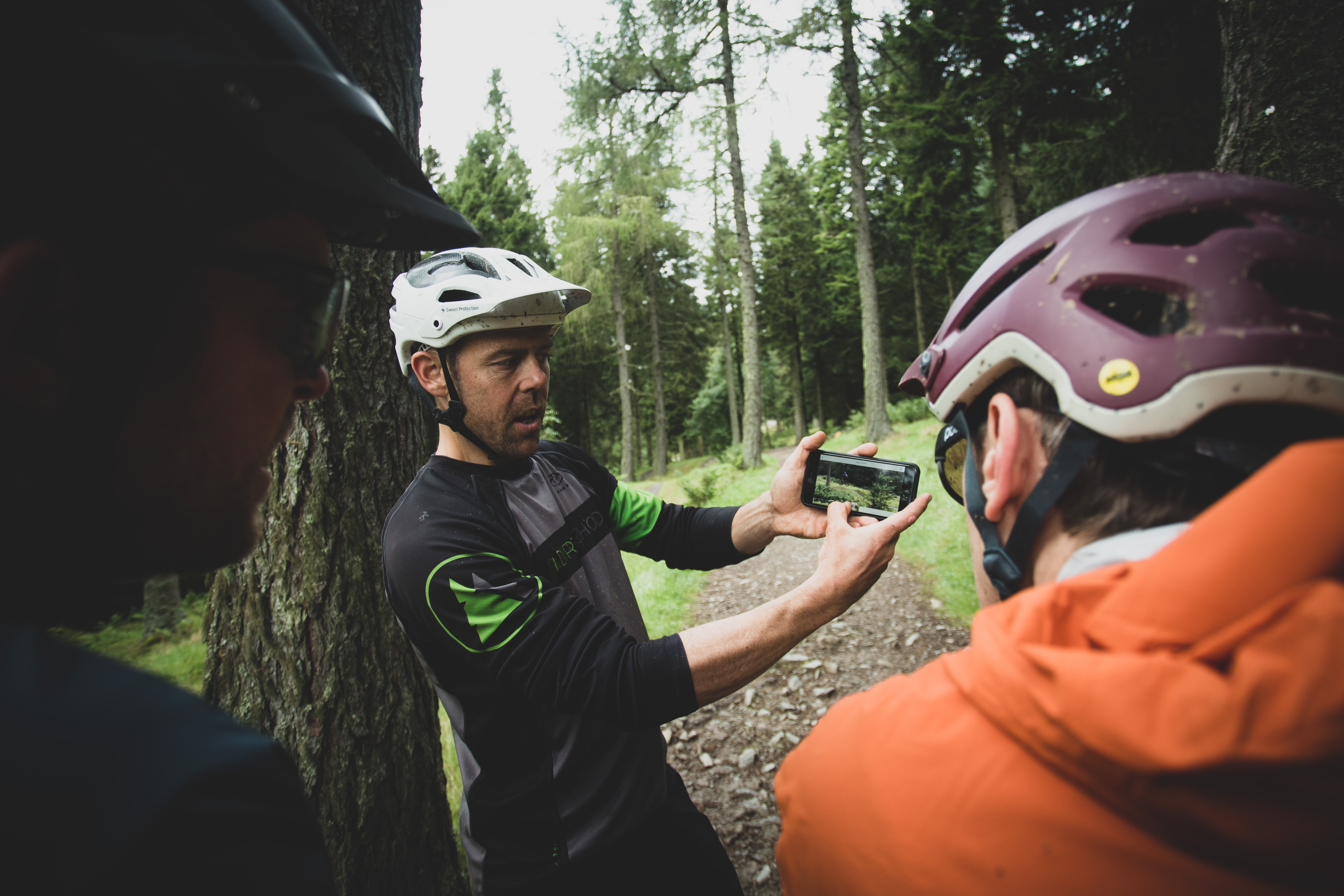
Later in the day, Andy gave Danny and I a bit of instruction so we could gain a little insight into his teaching style. It felt like a couple of days of instruction and feedback using phone/video would have led to big improvements. As it was I left with some things to think about that have definitely helped.
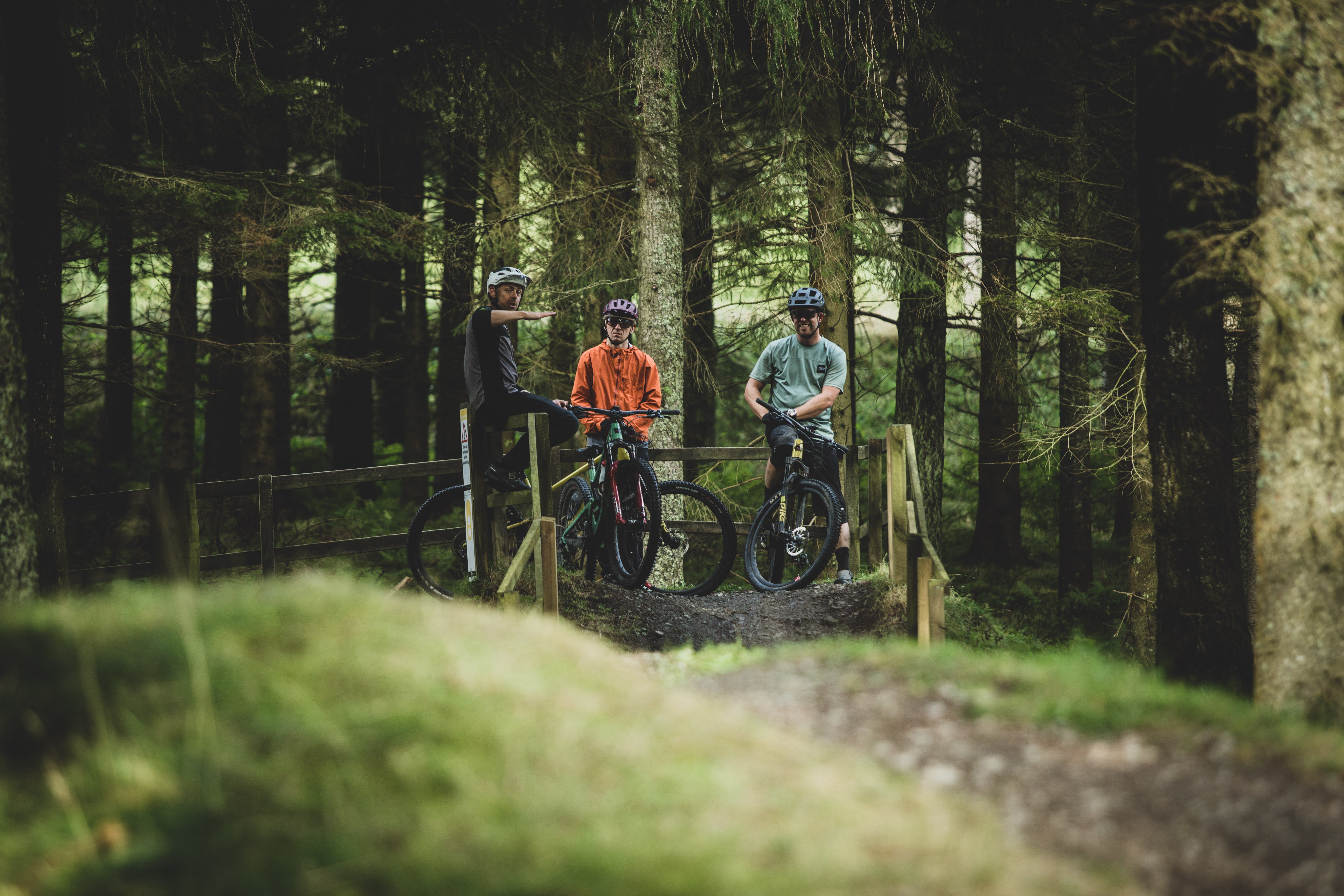
Andy is sat at the start of a jump line, giving Danny and me a few things to think about. The drop in leads to 5 or 6 tables that were perfectly sized for getting into the air without getting terrified. The tables got progressively larger, one or two with tricky entrances that required good technique to create or carry speed. Good building that facilitated good teaching.
The pro-level riding was impressive, but the amount of optimism the kids and coaches had about the prospects this program was creating for them, the confidence in themselves and their ability to learn new skills was the biggest revelation about Dirt School and BASE and their impacts. It was as creative and effective an example as I've seen of mountain biking being used for good, and another example of the ways in which mountain biking is becoming intertwined in the economy as well as the lives of the people that live in Scotland's Tweed Valley. If I didn't know just how strong that link was before I got there, there was no doubt about it after seeing the BASE program in action.
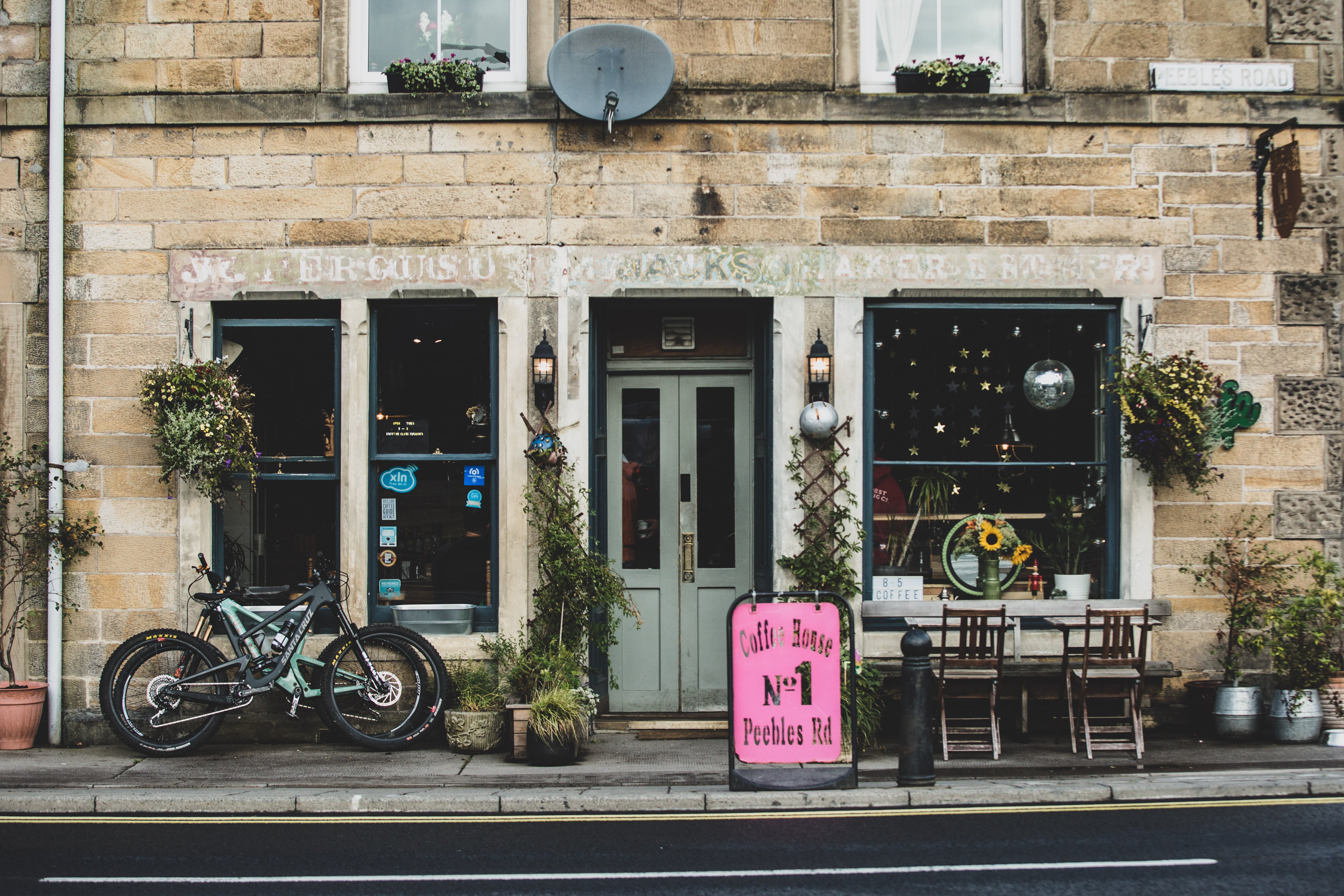
Many rides start or end at No1 Peebles Road café.
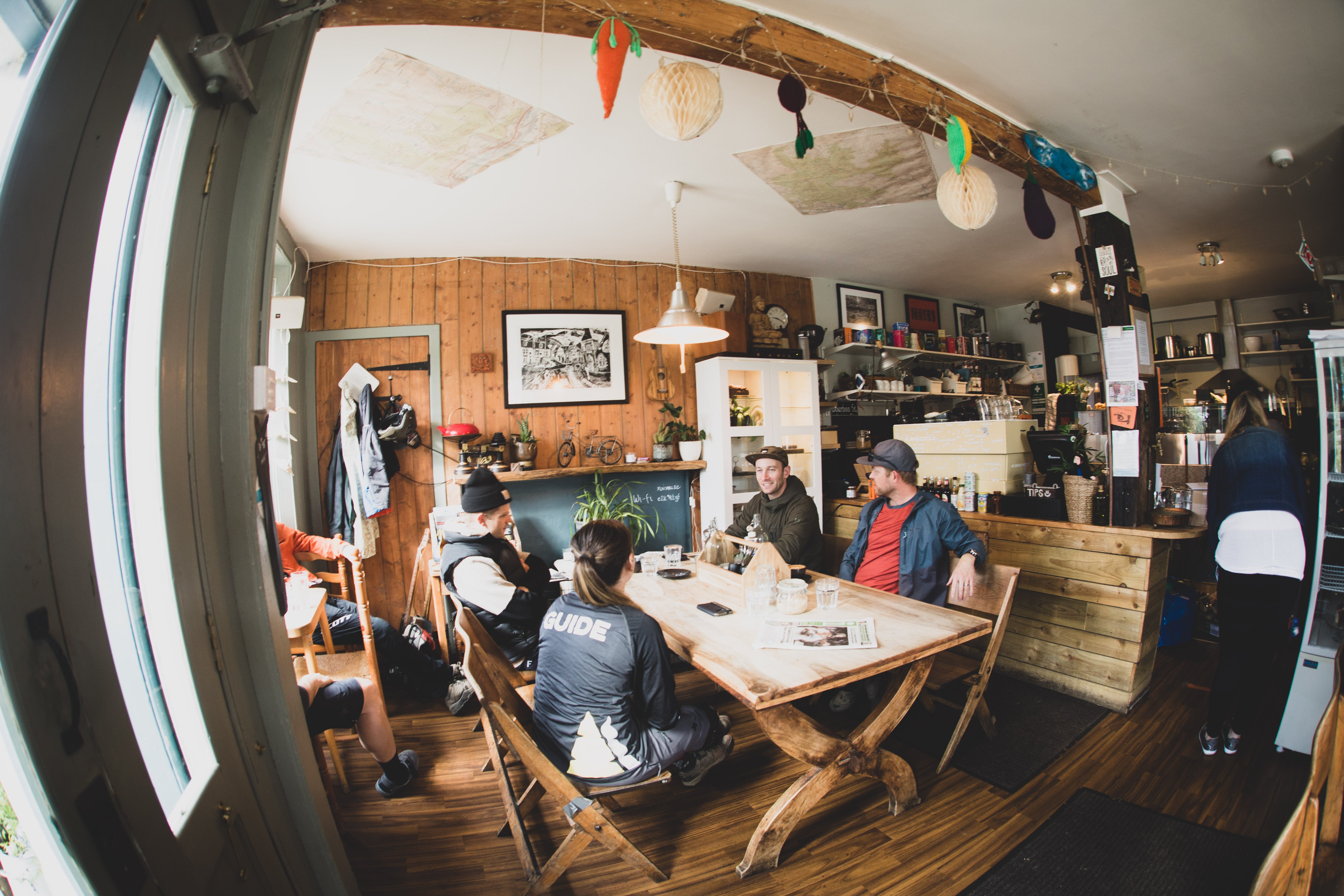
It's cozy inside, which is a handy thing in Scotland.
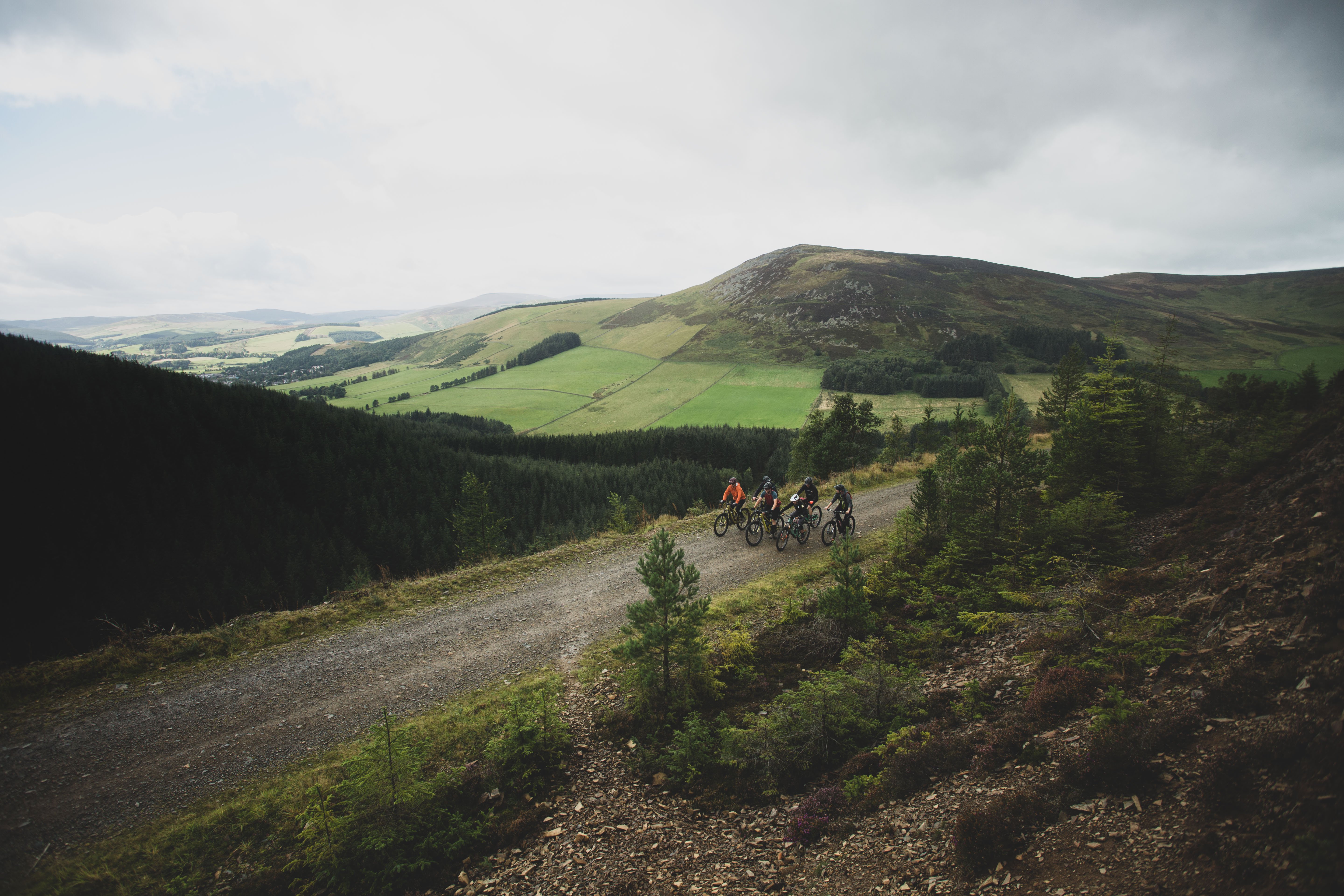
Climbing up out of Innerleithen.
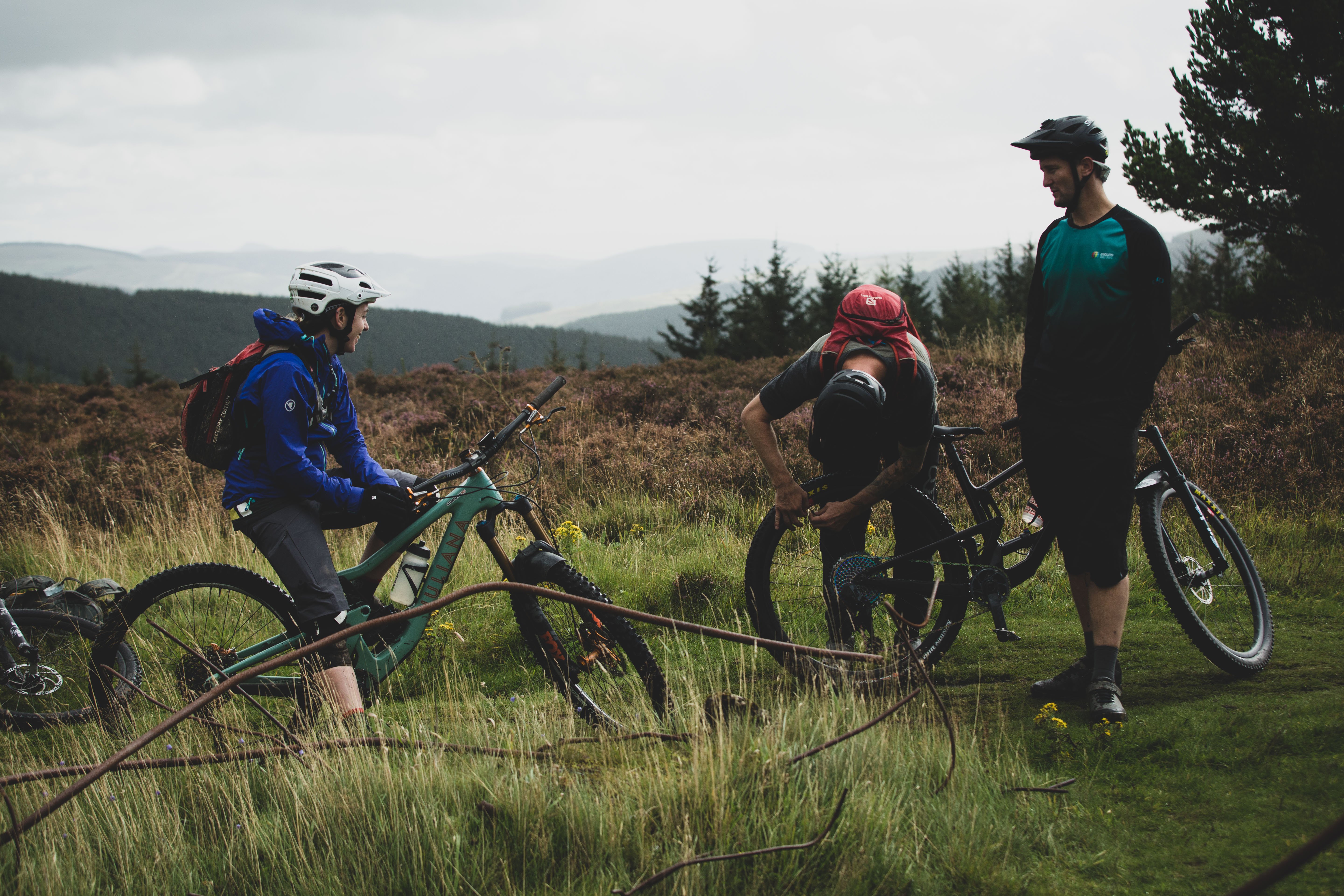
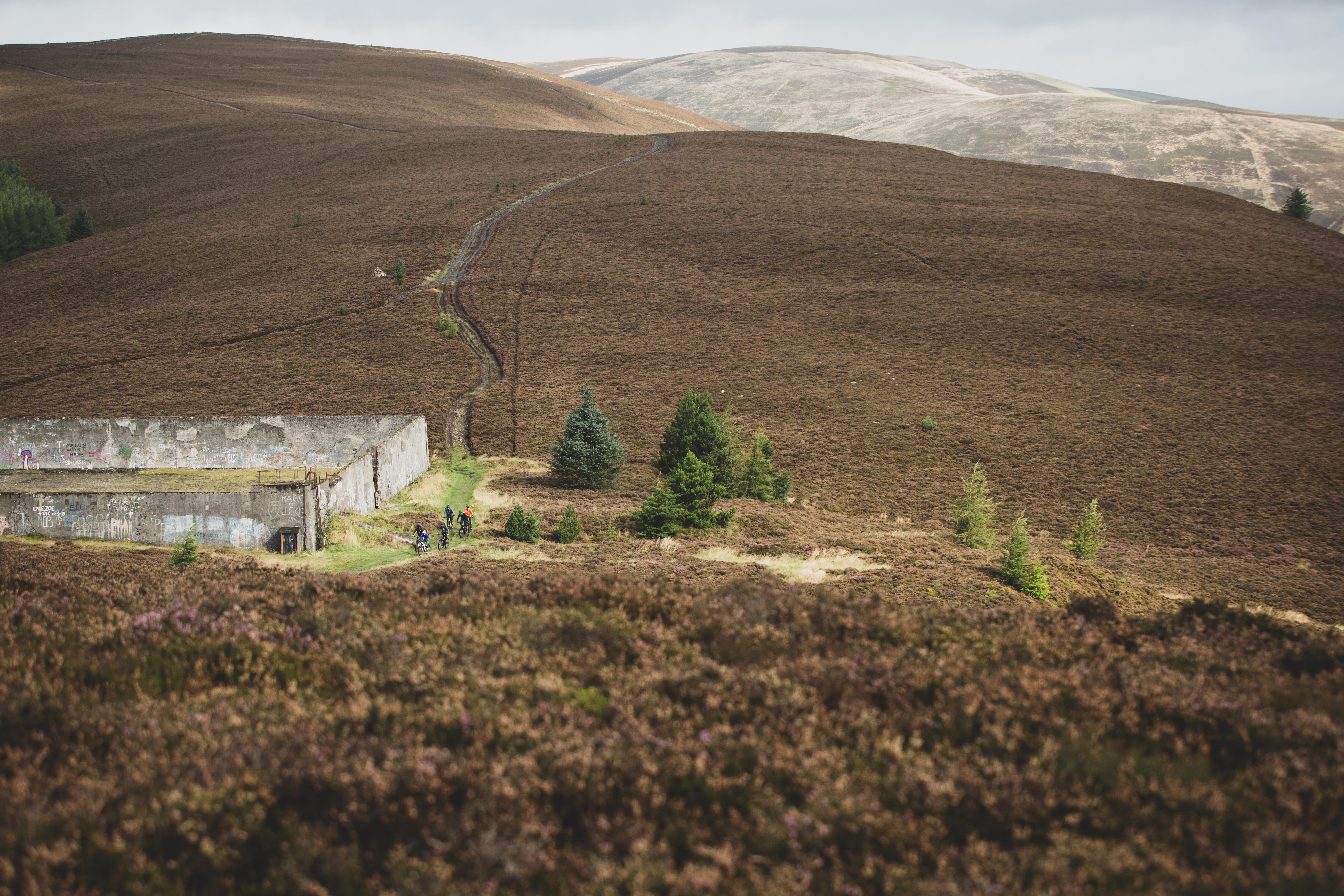
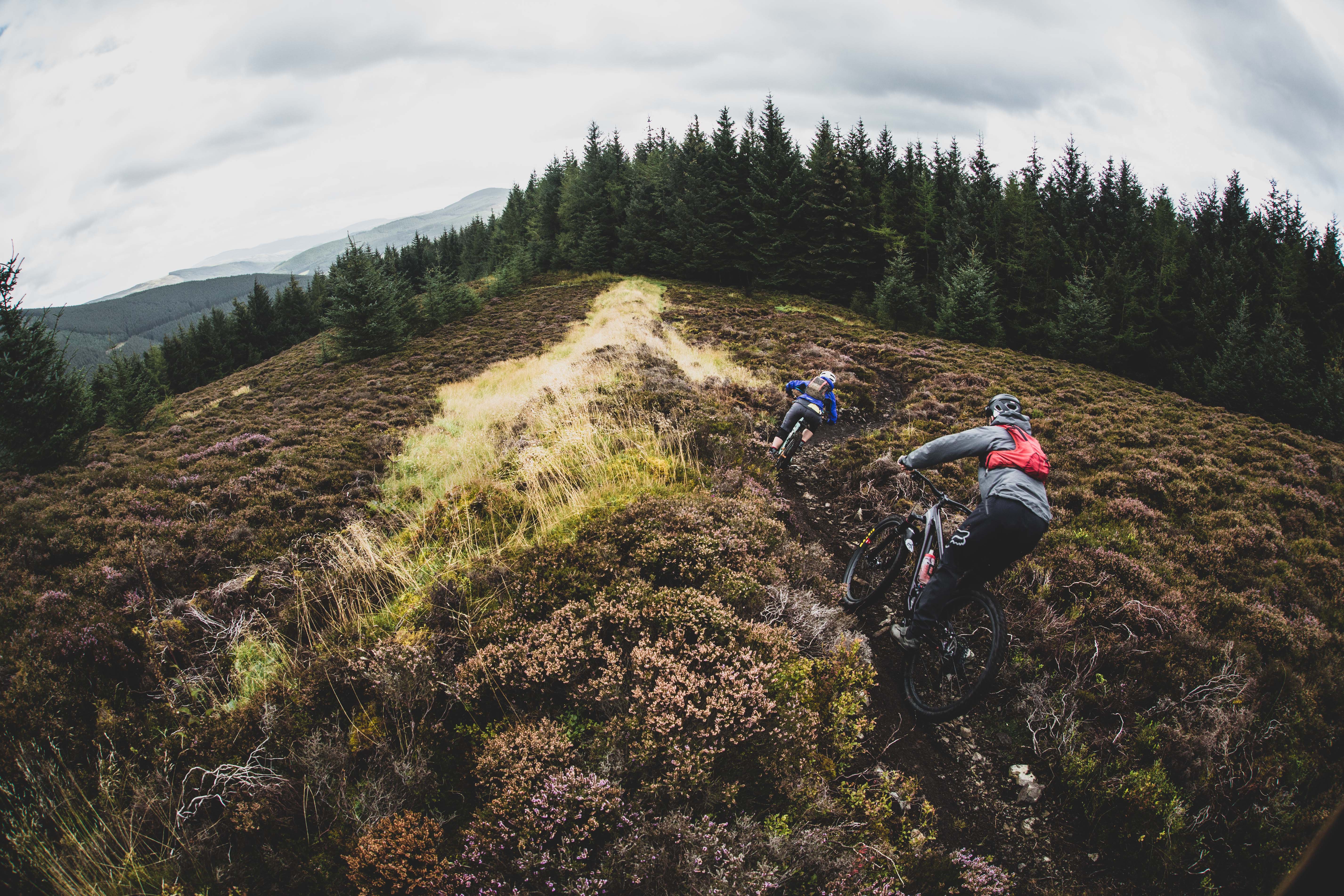
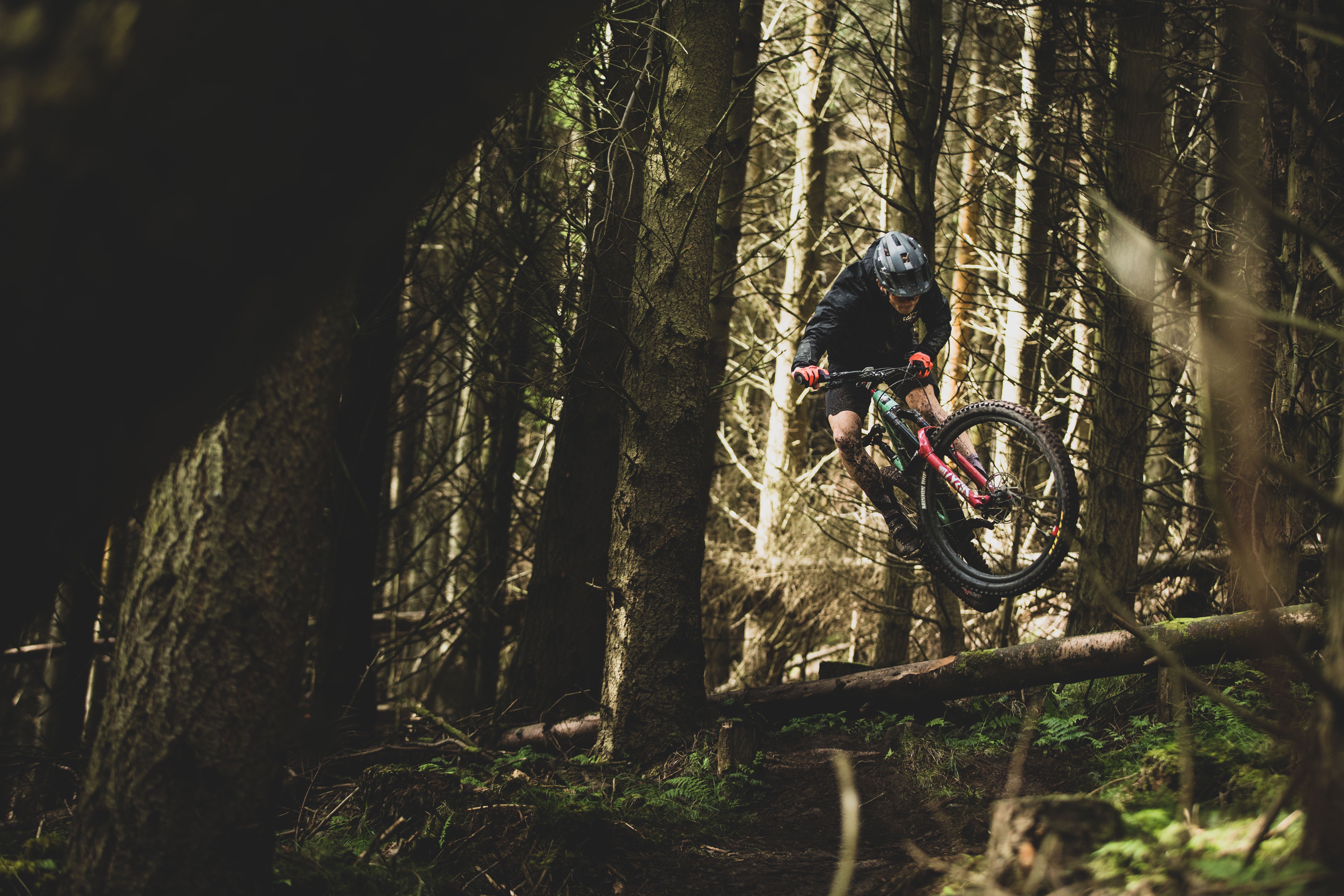
Until a visa issue derailed his trip to the Tahoe round in the 2019 EWS season, Mark Scott was the only pro that had raced every single round. He continues to train and compete in EWS, but also works on XC and Cross. There are, in fact, a LOT of fast racers in the area: Ruaridh Cunningham and Katy Winton to name a couple, but there are many more.
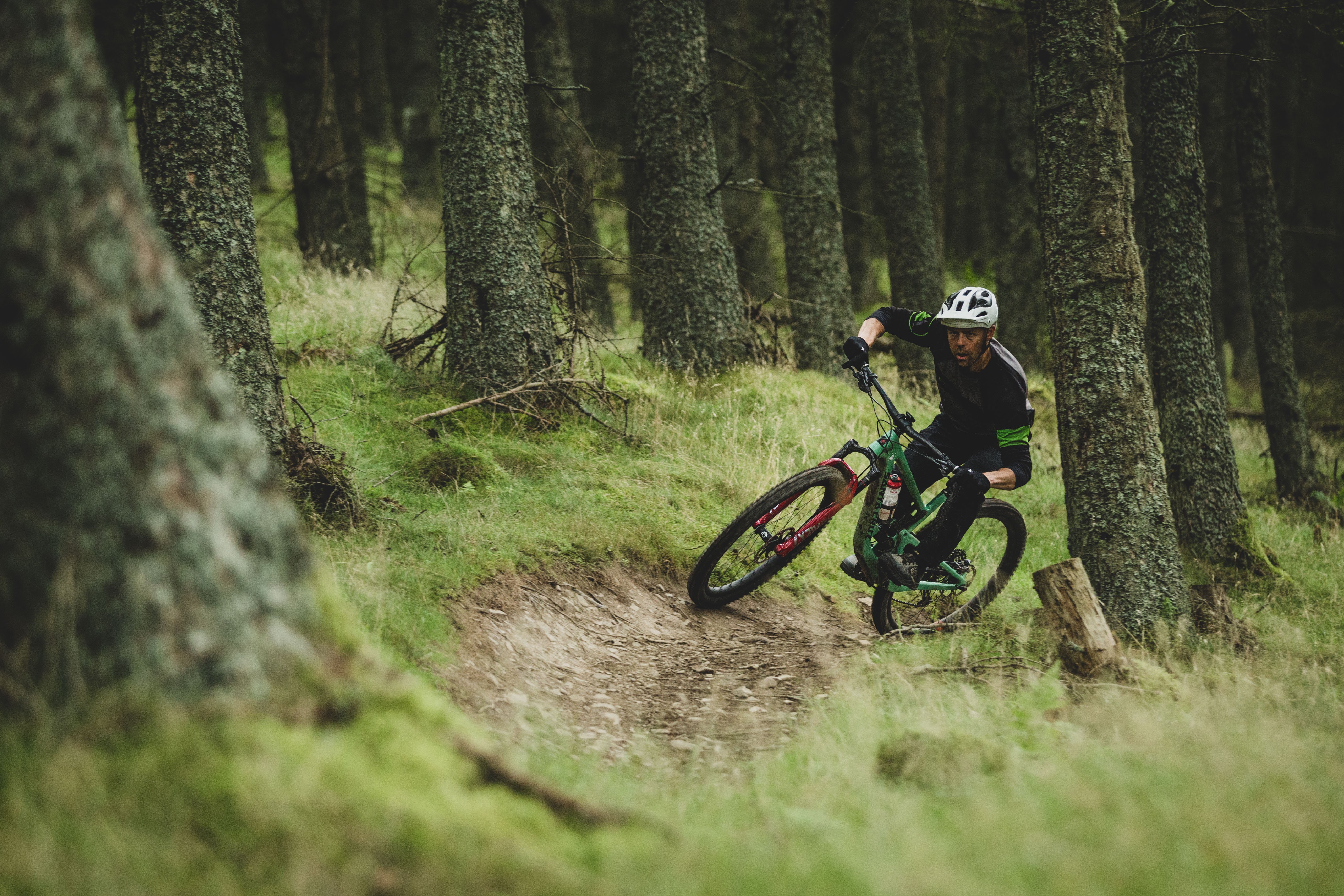
Andy Barlow getting it done above Innerleithen.
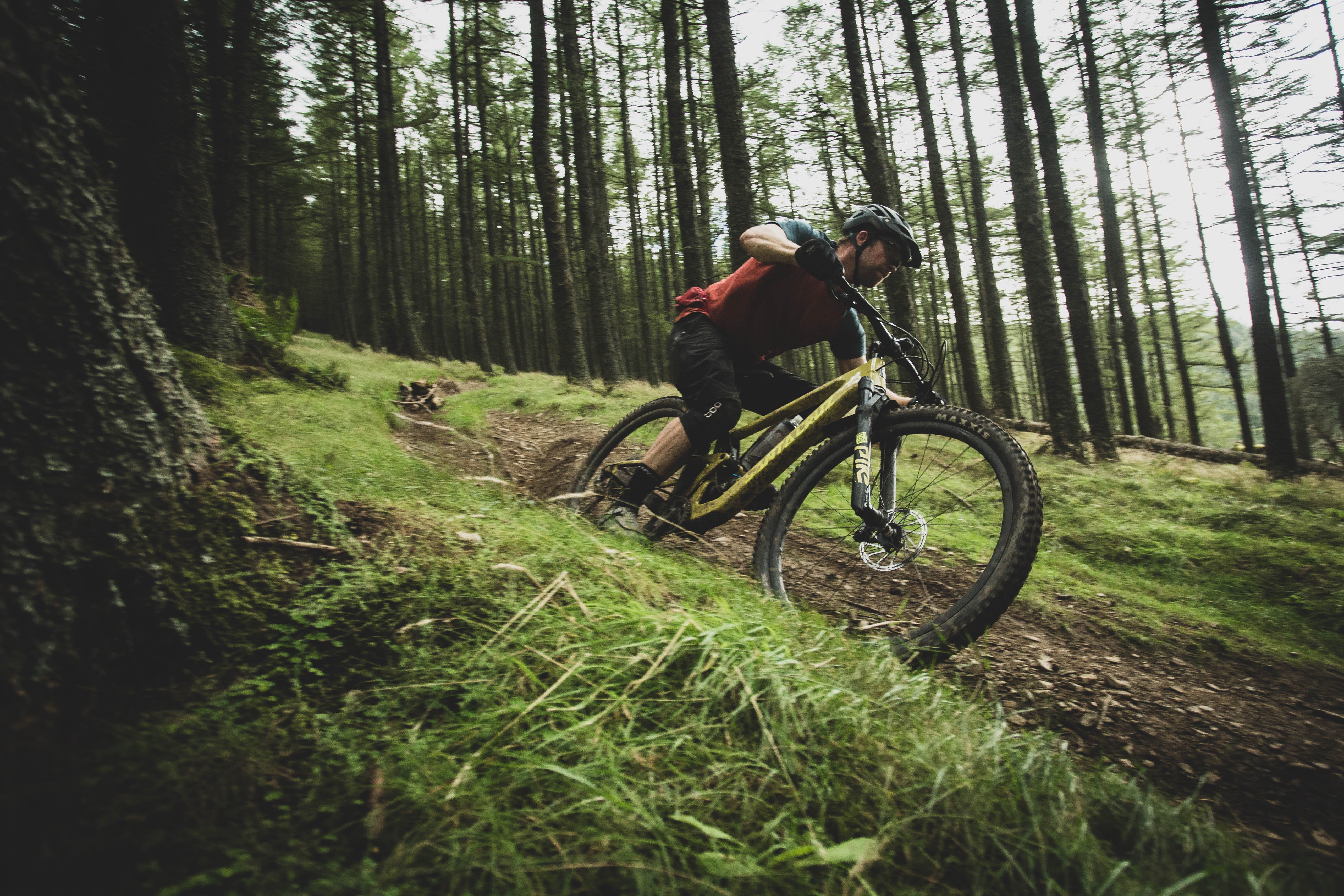
I could have sessioned this trail for hours.
On the third day, we met up with EWS boss Chris Ball as well as pro racer Mark Scott, and my host and travel buddy Seb Kemp was even able to wrest himself away from a crazy work schedule and get out on two wheels with us. The morning started with coffee and a wicked breakfast - as each morning did - at No1 Peebles Road which was a great spot on the high street in Peebles. Like any great local coffee shop, its role as caffeinator was only one part of the equation: it was also a social hub, gossip parlour, and meeting place. They never batted an eye when we showed up covered in mud, desperate for a warm drink or a snack, and the huge smiles and easygoing nature of the owners was infectious.
The ride that day was a classic. From dark, twisty singletrack with a fresh coat of grease, to open-air ripping in heather-strewn fields peppered with shale, to the steeps of the Golfie and capped off with some low angle sessions in a brightly lit green room, it felt like four rides in one. Like everything else in Scotland, smiles came easily and the optimism of everyone we met was easy to see and feel. For an area that has had its share of hardship, the Tweed Valley is well on its way to a new period of prosperity, and it has mountain bikers to thank in large part.
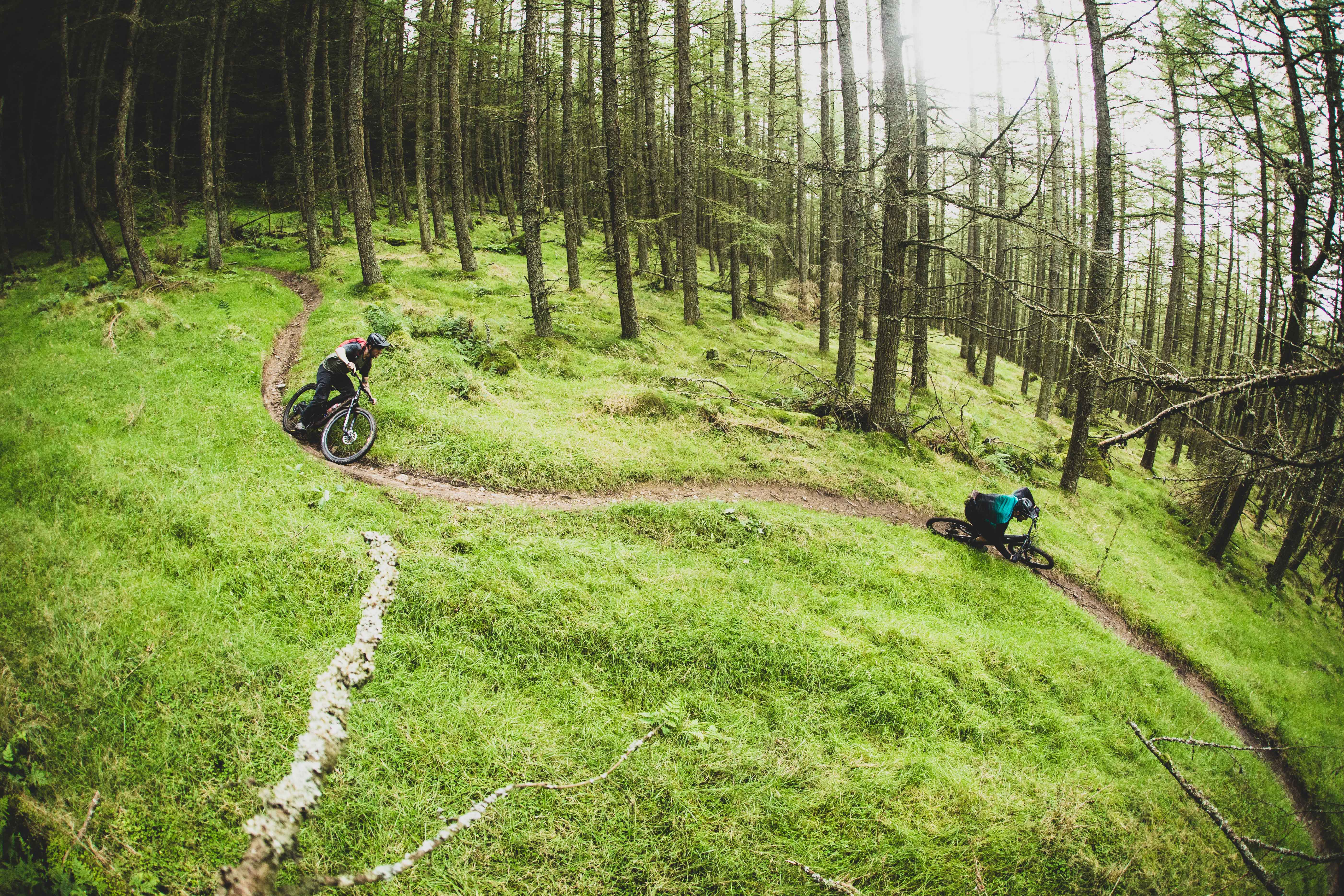
Seb Kemp and Andy Barlow on a very scenic piece of trail near Innerleithen.
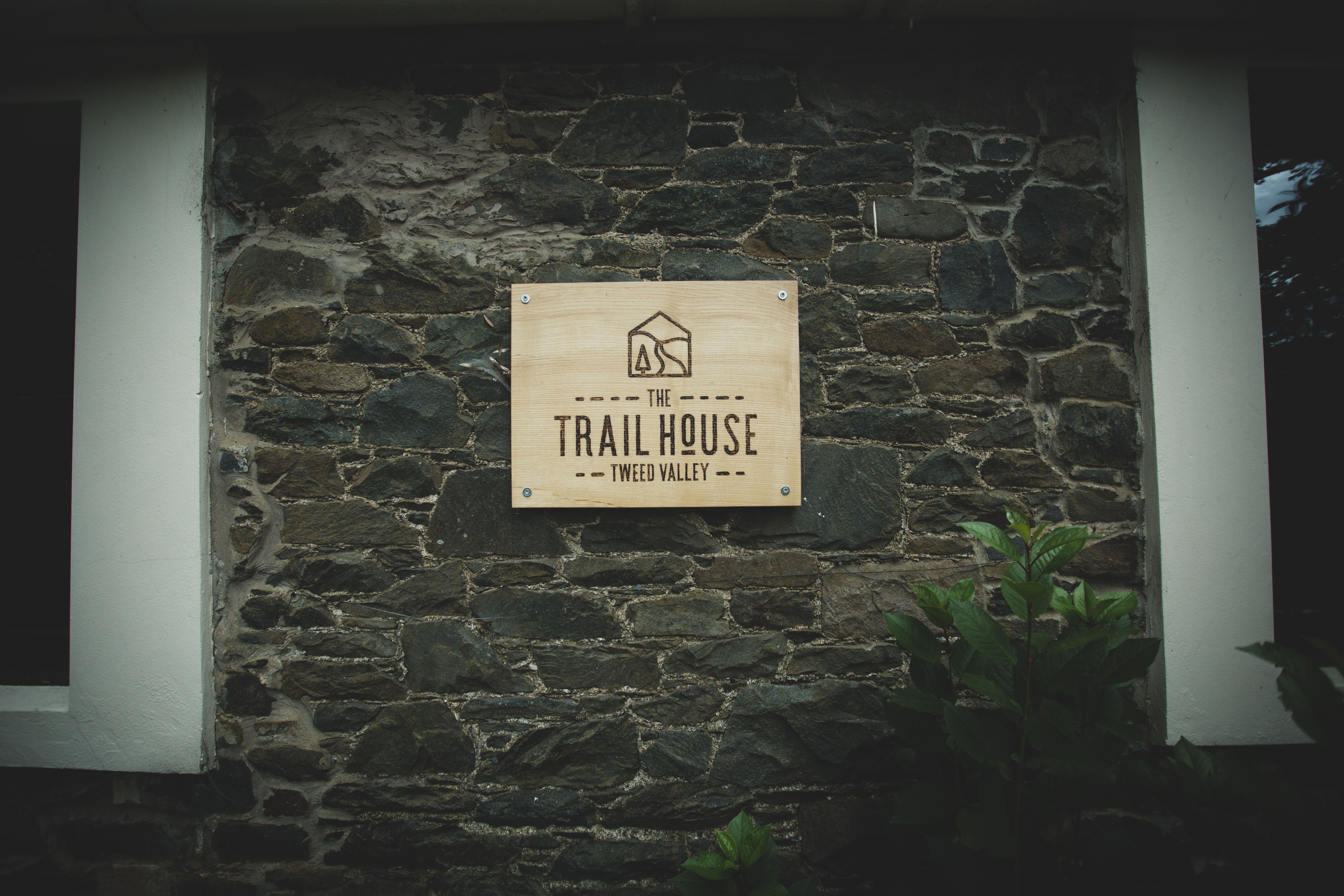
We didn't get any photos of the place we stayed, however it was a beautifully renovated home near Glentress. Here's a link to The Trail House in Tweed Valley if you're inclined to check it out when planning your next trip.
It's difficult to properly account for how much I saw and learned in three days. To say my experience in the Scottish Borderlands was enriching would be understating the truth of the experience. There are so many storylines to follow, with more emerging, that one's head spins trying to get a handle on them all. What was easy to understand, however, is that there is a core of dynamic, intelligent, and motivated people at the heart of everything going on there. They come at it from different angles, but they are united in their love of the outdoors and especially for mountain biking, and they all see how much potential there is to use it as a way to improve their own lives but more importantly those of everyone around them. The remarkable thing is that this potent cocktail of optimism and industry has caught the attention of their government at many levels, and the growth is infectious. The history and impact of mountain biking on the Tweed Valley is already significant, but it's clear the best is yet to come.
Age: 46
Height: 6'1 // 185 cms
Weight: 195 lbs // 88 kg
Inseam: 32" // 81 cm
Bar width: 780 - 800mm // Reach: 485 - 500mm // Dropper: 180 - 200mm
Flats or clipless: Default clipless, flats for zesty stuff
Trail(s) of choice: VFR and a bunch I can't name
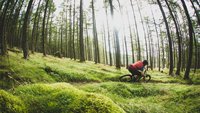
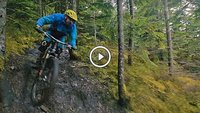
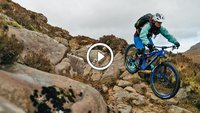
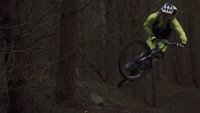







Comments
Shackleton
3 years, 7 months ago
Nice report and write up, and I realise that this was a likely paid for jolly, but...... I get tired of seeing Scotland = Tweed Valley. Saying that you visited Scotland but only rode the tweed valley is like saying you visited Canada but only rode within 10 miles of BC.
The Tweed Valley is nearer to a larger proportion of England's population than Scotland's and the relentless, and almost exclusive, focus on the area by the media sucks investment (ideas and money) out of the rest of the country.
We could really do with some love and focus on areas to the north that are more economically deprived and just as good or better, rather than continuing with the Edinburgh area (30 minutes from tweed valley and Scotland's capital), all money must go to the capital, circle jerk fest.
Reply
Pete Roggeman
3 years, 7 months ago
That's a fair point. My blanket statements surrounding Scotland had more to do with the fact that the national government is behind some of these initiatives (7stanes, The Mill), Worlds coming in 2023, etc. I'll see if I can make a few tweaks.
And I'd love to visit/ride other parts of the country. Can you tell me which ones you think are best? No time like the present to start researching some other options...
Yes, Santa Cruz made this trip happen, and the media is always going to start with a focus on areas when there's an impetus of some sort. I don't think there's some sort of conspiracy keeping attention away from other areas, but they require champions to wrangle some budget, contact some media, and make a pitch to get a story pursued and written. It's a vicious circle, but I think that points, again, to the fact that a lot of hard-working and dedicated people are currently focused on Tweed Valley. I've no doubt there are other deserving areas, but like all things, getting attention sometimes requires making it impossible to ignore.
Reply
Shackleton
3 years, 7 months ago
Sorry, didn't mean to be down on you. I know plenty of folk working to scratch up funds and interest for other areas and trails but once it get above a certain level it just all seems to go to the tweed valley. The DMBinS folk do a good job but they are fighting government inertia and habit. The morons who voted to deprive us of EU funds didn't help either.
If you head north from the tweed valley stop at Dunkeld, then head to Pitlochry and then up to Contin/Golspie area. From there head west to Torridon and down to Laggan via Fort William. That is easily 2 weeks of fun just doing the classics before you even venture into the mountains for some out there serious stuff or scoot over to Braemar/Ballater area.
Reply
Tremeer023
3 years, 7 months ago
We are lucky to have accessible beauty spots like this to ride in the UK. I've been to Fort Bill a couple of times but not Inners (yet). The Welsh Gov have also embraced mtb very well too. We make the most of our mountains!
I see the point about too much focus on one area, but (i'm guessing) to be financially viable it needs certain numbers of people visiting regularly. The north of Scotland is probably my favourite place in the world but it is a real mission to get to (from South England especially), so I can understand why the Tweed Valley is so popular.
Gotta get back up there again soon.
Reply
danimaniac
3 years, 7 months ago
Have you guys seen the latest Live to Ride Episode (I think E8) witih Lewis Buchanan riding Innerleithen?
Looks really nice up there.
Reply
decentoperating
1 year, 10 months ago
It's my dream to have such a level of biking. These students are so cool. But in my state, I don't have such schools. I teach myself through youtube videos, but it's better when you have a successful example. That's why I'm using this source essayservicescanner.com for my educational tasks because it's easier to repeat after you see something worthwhile. I hope to move to a part-time education soon and move to the town where I can visit similar courses. It costs a lot of money, but thanks to my work, I can afford it. And I think I deserve to do my favourite thing.
Reply
Please log in to leave a comment.